Primitive
SQLデータの読み込みと表示1
Reference: IAWA Comittee, IAWA Journal 25 (1): 1–70, 2004. *The codes, 112-114, were modified in this Atlas and different from IAWA Softwood List.
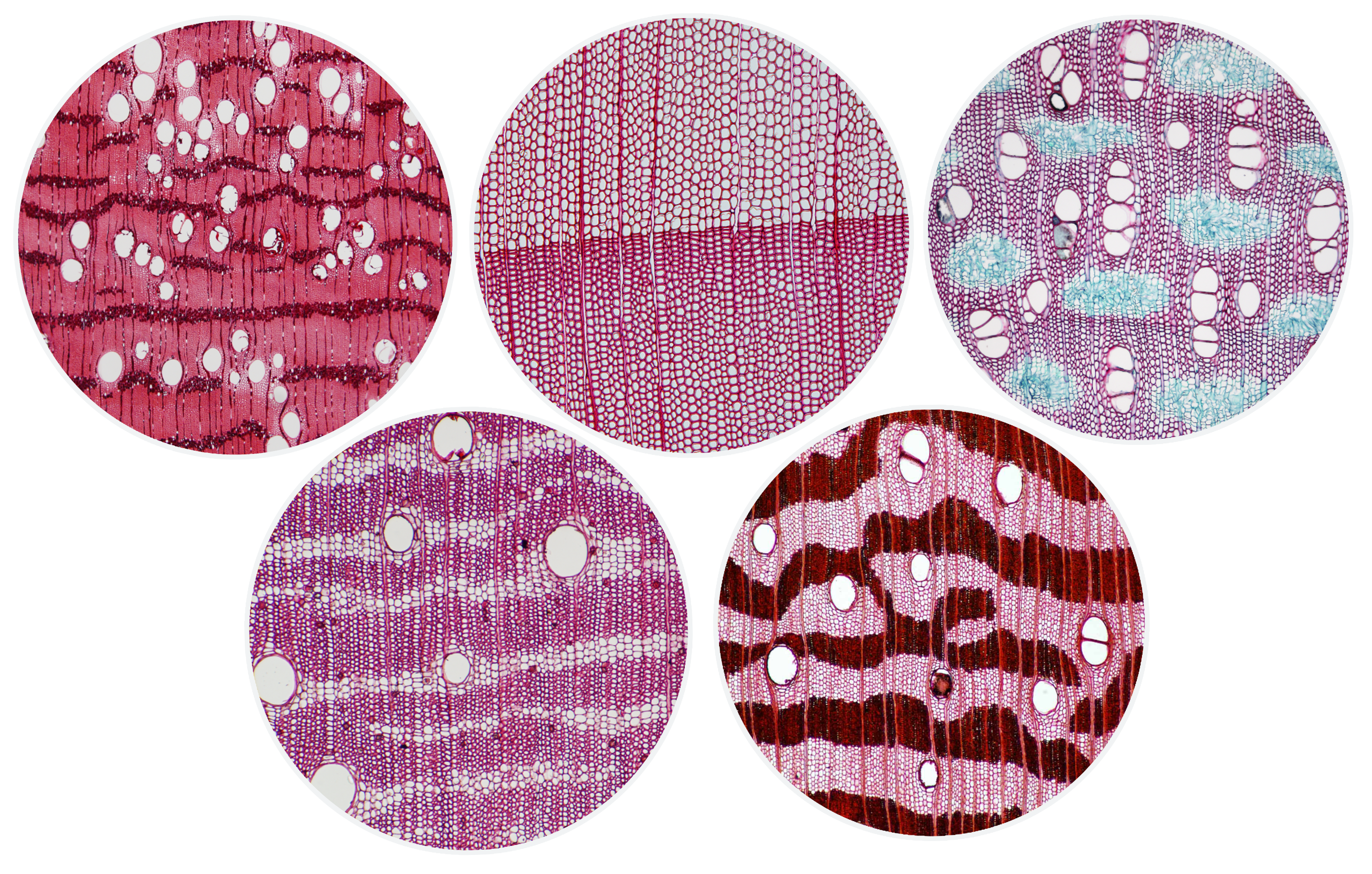

China has the most diverse plant vegetation in the northern hemisphere. This diversity includes more than 30,000 species of higher plants, approximately one third of which are woody. Plant species face many threats to survival, with current extinction rates reported to be higher than in pre-historic times. The higher rates of extinction is not just because of climate change, but also due to exploitation, habitat loss, and environmental pollution all over the world. Drastic changes in the environment and economy have taken place in the last two to three decades in China. For instance, land development has advanced much more rapidly in all provinces in parallel with the economic boom. Consequently, a number of traditional folk-houses have been destroyed or modified for other economic purposes. At the same time, a great number of historic or archaeological sites have been excavated during land development throughout the country. In many cases, archaeological sites are filled with large amounts of timber and logs. This situation has given opportunities for wood scientists and archaeologists to get involved in identification of traditionally used wood species, and helps in the restoration of cultural heritage.
The authors have been actively involved in the identification of wood components of cultural treasures such as temples and shrines, and of Buddhist statues, and archaeological wooden remaims in China and Japan, to understand “wood culture” from a scientific aspect. However, references for identifying wood species in China are limited. The most reliable and useful book for this purpose is an out-of-print book “Wood atlas in China” (中国木材志, zhong guo mu cai zhi), which describes anatomical features of wood from 36 softwood species and 315 hardwood species, along with microscopic images from 52 softwood and 240 hardwood species. However, there are about 10,000 or more species of woody plants growing in China, including shrubs and vines. A reference with description of a limited number of woody plant species will not be sufficient for identification of wood species excavated from archaeological sites, or for reconstruction of the forest vegetation from the past. In view of insufficient information of the anatomical features of various wood species in China, we started to build the database as part of a mission to keep a record of the diversity of microscopic features of wood from China.
The publication under the title Anatomical Database and Atlas of Chinese Woods will be of some help not only in the scientific understanding of wood culture, but also in the prevention of illegal logging of trees and forest conservation, and the authors have worked together for many years to prepare microscope slides of various Chinese wood specimens, describe microscopic features and take microscope images. In consideration of the biodiversity of Chinese trees, approximately 1,300 woody species including the CITES (Convention on International Trade in Endangered Species of Wild Fauna and Flora)-listed, endangered and endemic trees are covered in this database.
The main features and advantages of this database are as follows:
We hope that the database will be helpful in the studies of Chinese woods related to wood science, tree biology, paleobotany, archeology, vegetation history, architecture, art history and other special fields.
The construction of the database of Chinese woods, analyzed at the microscopic level, was supported by a JSPS Grants-in-aid for Scientific Research (KAKENHI), Grant Number JP20580187, and performed at the Nara National Research Institute for Cultural Properties, Nara, Japan. Part of this research was supported by the collaborative Researches using Database at the Research Institute for Sustainable Humanosphere (RISH), Kyoto, Japan.
The authors express special thanks to the Research Institute for Sustainable Humanosphere, Kyoto University. Especially, the editor-in-chief is indebted to RISH for giving him the support and environment to initiate this database project, and to the College of Material Science and Technology, Nanjing Forestry University for inviting him as a Specially Appointed Professor, and giving him the opportunity to advance the cooperative research for preparing and editing the database of Chinese woods.
The authors also express their thanks to Professor Yongji Xu at Nanjing Forestry University, Nanjing, China; Professor Yixing Liu at Northeast Forestry University, Harbin, China; Professor Xinqiang He at Peking University, Beijing, China; Professor Jian Qiu at Southwest Forestry University (SWFU), Kunming, China; Professor Jianying Xu at Central South University of Forestry and Technology, Changsha, China; Dr. Guoxiong Huang at the Forest Research Institute, Taipei, Taiwan; Professor Junji Sugiyama (former professor in Research Institute for Sustainable Humanosphere) at Kyoto University, Kyoto, Japan, and Visiting Professor Shuichi Noshiro, at the Center for Obsidian and Lithic Studies, Meiji University, Tokyo, Japan and former Team Leader at the Forestry and Forest Products Research Institute, Tsukuba, Japan for providing Chinese woods specimens. Additionally, the authors express their thanks to Dr. Tomoyuki Fujii, Fellow, the Forestry and Forest Products Research Institute, Tsukuba, Japan, and Dr. Shuichi Noshiro for critically reviewing descriptions and photomicrographs in this database. In particular, Dr. Fujii made full use of the photo enlargement function to proofread the database, which further increased the reliability of the database; Dr. Mechtild Mertz, Researcher, East Asian Civilisations Research Centre (CRCAO-CNRS), Paris, France for reviewing uses of almost all species listed in our database; Dr. Koji Yonekura, at the Research Center of the Okinawa Churashima Foundation, Okinawa, Japan for critically reviewing the scientific names of all species listed in this database; Emeritus Professor, Mitsuo Suzuki, at Tohoku University, Sendai, Japan, for valuable advice in the scientific names of the database; Dr. Bei Luo, Associate Professor, Southwest Forestry University, Kunming, China for reviewing the pinyin and Chinese character of vernacular names; Dr. Feng Wang, Post-doctoral fellow, Institut national de la recherche scientifique (INRS), Québec, Canada. and MSc. Jin Hou, graduated from School of Resource and Environmental Sciences, Wuhan University, Wuhan, China for their great contributions in drawing distribution maps; MSc. Shisi Yang, graduated from the College of Art and Design, Nanjing Forestry University, Nanjing, China for reviewing province names corresponding to the distribution maps; Mr. Yoshitsugu Yasumoto, Prior Expert, Asahi Woodtec Corporation, Osaka, Japan for taking stereomicroscopic photos of wood species listed in our database; Dr. Inder Saxena, Assistant Professor of Instruction, the University of Texas at Austin, U. S. A. for going through the text in the database.
Last but not least, the authors are deeply grateful to Hisashi Miyauchi, President of Kaiseisha Press, Ohtsu, Japan for his acceptance and patience in publishing this database and to Masato Fukui, Chief Manager of Kaiseisha Press, for his great skills of constructing the computer-aided search programs in our database.
We constructed a database of microscopic features of 1,255 wood species from China (a) to assist in wood identification of any type of wood or wood product, such as wood cultural items, (b) to use this database for teaching, and (c) for any other purposes in China and other countries. In constructing this database, we specially considered the “biodiversity” factor, and described not only commercial timbers, but also endemic and endangered species (1, see Appendix Table 3).
Basically, we targeted wood species that are indigenous in China, but we also included some foreign species, introduced and/or cultivated in China because of their high commercial value, Eucalyptus spp., Santalum album, Pterocarpus santalinus, Hevea brasiliensis, Swietenia mahagoni, and Tectona grandis etc. We made efforts to describe as many woody families and genera as possible to cover a wide range of taxonomically diverse species from the perspective of biodiversity in trees. Additionally, we included wood specimens of some shrubs and vines donated by some xylaria in Japan. This was important as xylaria of universities and institutions in Japan store collections of Chinese woods, and wood specimens from these shrubs and vines are limited to the xylaria in China. Many wood species grows in both China and Japan. Due to the shortage of collecting some wood species in China, we utilized those grown and collected in Japan as shown in table 1.
Table 1. Wood species grown and collected in Japan.
| APG-Family | APG-Family (Chinese) | APG-Species | Species-Chinese name |
|---|---|---|---|
| Gymnospermae | |||
| Cupressaceae | 柏科 | Chamaecyparis obtusa (Siebold & Zuccarini) Endlicher | 日本扁柏 |
| Cupressaceae | 柏科 | Thujopsis dolabrata (Thunberg ex Linnaeus f.) Siebold & Zuccarini | 罗汉柏 |
| Pinaceae | 松科 | Picea jezoensis (Siebold & Zuccarini) Carrière | 卵果鱼鳞云杉 |
| Angiospermae | |||
| Actinidiaceae | 猕猴桃科 | Actinidia polygama (Siebold & Zuccarini) Maximowicz | 葛枣猕猴桃 |
| Rubiaceae | 茜草科 | Aidia henryi (E. Pritzel) T. Yamazaki | 茜树 |
| Lardizabalaceae | 木通科 | Akebia quinata (Houttuyn) Decaisne | 木通 |
| Fabaceae | 豆科 | Amorpha fruticosa Linnaeus | 紫穗槐 |
| Apocynaceae | 夹竹桃科 | Anodendron affine (Hooker & Arnott) Druce | 鳝藤 |
| Phyllanthaceae | 叶下珠科 | Antidesma japonicum Siebold & Zuccarini | 酸味子 |
| Primulaceae | 报春花科 | Ardisia crenata Sims | 朱砂根 |
| Primulaceae | 报春花科 | Ardisia sieboldii Miquel | 多枝紫金牛 |
| Berberidaceae | 小檗科 | Berberis amurensis Ruprecht | 黄芦木 |
| Fabaceae | 豆科 | Biancaea decapetala (Roth) O. Degener | 云实 |
| Lamiaceae | 唇形科 | Callicarpa japonica Thunberg | 日本紫珠 |
| Theaceae | 山茶科 | Camellia japonica Linnaeus | 山茶 |
| Theaceae | 山茶科 | Camellia sinensis (Linnaeus) Kuntze | 茶 |
| Bignoniaceae | 紫葳科 | Catalpa ovata G. Don | 梓 |
| Celastraceae | 卫矛科 | Celastrus orbiculatus Thunberg | 南蛇藤 |
| Oleaceae | 木犀科 | Chionanthus retusus Lindley & Paxton | 流苏树 |
| Rutaceae | 芸香科 | Citrus trifoliata Linnaeus | 枳 |
| Lamiaceae | 唇形科 | Clerodendrum trichotomum Thunberg | 海州常山 |
| Menispermaceae | 防己科 | Cocculus laurifolius Candolle | 樟叶木防己 |
| Rosaceae | 蔷薇科 | Crataegus cuneata Siebold & Zuccarini | 野山楂 |
| Thymelaeaceae | 瑞香科 | Daphne odora Thunberg | 瑞香 |
| Hydrangeaceae | 绣球科 | Deutzia crenata Siebold & Zuccarini | 齿叶溲疏 |
| Sapindaceae | 无患子科 | Dodonaea viscosa Jacquin | 车桑子 |
| Rosaceae | 蔷薇科 | Dryas octopetala Linnaeus var. asiatica (Nakai) Nakai | 东亚仙女木 |
| Thymelaeaceae | 瑞香科 | Edgeworthia chrysantha Lindley | 结香 |
| Boraginaceae | 紫草科 | Ehretia dicksonii Hance | 粗糠树 |
| Elaeagnaceae | 胡颓子科 | Elaeagnus multiflora Thunberg | 木半夏 |
| Elaeagnaceae | 胡颓子科 | Elaeagnus pungens Thunberg | 胡颓子 |
| Celastraceae | 卫矛科 | Euonymus oxyphyllus Miquel | 垂丝卫矛 |
| Araliaceae | 五加科科 | Fatsia japonica (Thunberg) Decaisne & Planchon | 八角金盘 |
| Fabaceae | 豆科 | Gleditsia japonica Miquel | 山皂荚 |
| Helwingiaceae | 青荚叶科 | Helwingia japonica (Thunberg) F. Dietrich | 青荚叶 |
| Malvaceae | 锦葵科 | Hibiscus mutabilis Linnaeus | 木芙蓉 |
| Malvaceae | 锦葵科 | Hibiscus syriacus Linnaeus | 木槿 |
| Hydrangeaceae | 绣球科 | Hydrangea paniculata Siebold | 圆锥绣球 |
| Hypericaceae | 金丝桃科 | Hypericum monogynum Linnaeus | 金丝桃 |
| Aquifoliaceae | 冬青科 | Ilex crenata Thunberg | 齿叶冬青 |
| Lythraceae | 千屈菜科 | Lagerstroemia indica Linnaeus | 紫薇 |
| Rubiaceae | 茜草科 | Lasianthus japonicus Miquel | 日本粗叶木 |
| Fabaceae | 豆科 | Lespedeza buergeri Miquel | 绿叶胡枝子 |
| Oleaceae | 木犀科 | Ligustrum obtusifolium Siebold & Zuccarini | 水蜡树 |
| Caprifoliaceae | 忍冬科 | Lonicera japonica Thunberg | 忍冬 |
| Solanaceae | 茄科 | Lycium chinense Miller | 枸杞 |
| Primulaceae | 报春花科 | Maesa japonica (Thunberg) Moritzi & Zollinger | 杜茎山 |
| Rosaceae | 蔷薇科 | Malus toringoides (Rehder) Hughes | 变叶海棠 |
| Celastraceae | 卫矛科 | Microtropis japonica (Franchet & Savatier) H. Hallier | 日本假卫矛 |
| Rubiaceae | 茜草科 | Morinda citrifolia Linnaeus | 海滨木巴戟 |
| Berberidaceae | 小檗科 | Nandina domestica Thunberg | 南天竹 |
| Rosaceae | 蔷薇科 | Neillia incisa (Thunberg) S.H. Oh | 小米空木 |
| Vitaceae | 葡萄科 | Nekemias cantoniensis (Hooker & Arnott) J. Wen & Z.L. Nie | 广东蛇葡萄 |
| Urticaceae | 荨麻科 | Oreocnide pedunculata (Shirai) Masamune | 长梗紫麻 |
| Rutaceae | 芸香科 | Orixa japonica Thunberg | 臭常山 |
| Paeoniaceae | 芍药科 | Paeonia suffruticosa Andrews | 牡丹 |
| Rhamnaceae | 鼠李科 | Paliurus ramosissimus (Loureiro) Poiret | 马甲子 |
| Rosaceae | 蔷薇科 | Photinia glabra (Thunberg) Maximowicz | 光叶石楠 |
| Phyllanthaceae | 叶下珠科 | Phyllanthus flexuosus (Siebold & Zuccarini) Müller Argoviensis | 落萼叶下珠 |
| Pittosporaceae | 海桐花科 | Pittosporum tobira (Thunberg) W. T Aiton | 海桐 |
| Rubiaceae | 茜草科 | Psychotria asiatica Linnaeus | 九节 |
| Rosaceae | 蔷薇科 | Rhodotypos scandens (Thunberg) Makino | 鸡麻 |
| Rosaceae | 蔷薇科 | Rosa multiflora Thunberg | 野蔷薇 |
| Rosaceae | 蔷薇科 | Rubus crataegifolius Bunge | 牛叠肚 |
| Rosaceae | 蔷薇科 | Sorbaria sorbifolia (Linnaeus) A. Braun | 珍珠梅 |
| Staphyleaceae | 省沽油科 | Staphylea bumalda Candolle | 省沽油 |
| Rubiaceae | 茜草科 | Tarenna gracilipes (Hayata) Ohwi | 薄叶玉心花 |
| Apocynaceae | 夹竹桃科 | Trachelospermum asiaticum (Siebold & Zuccarini) Nakai | 亚洲络石 |
| Rubiaceae | 茜草科 | Uncaria rhynchophylla (Miquel) Miquel | 钩藤 |
Wood specimens were donated or collected from various universities and institutions of China and Japan. These include Nanjing Forestry University, Nanjing, China; Northeast Forestry University, Harbin, China; Southwest Forestry University, Kunming, China; Peking University, Beijing, China; Central South University of Forestry and Technology, Changsha, China; Forest Research Institute, Taipei, Taiwan; Research Institute for Sustainable Humanosphere, Kyoto University, Kyoto, Japan; Forestry and Forest Products Research Institute, Tsukuba, Japan; Osaka Museum of Natural History, Osaka, Japan.
Microscopic slides were mainly prepared by some authors, Yongzhi Cui, Northeast Forestry University, Harbin and to a lesser degree by Dagang Li, Nanjing Forestry University, Nanjjing and by Takao Itoh, Kyoto University, Kyoto. Using a sliding microtome (Yamato Koki Industrial Co. Ltd., Japan), sections with a thickness between 10 and 20 µm were prepared from the wood specimens. All sections were stained with safranin and subsequently dehydrated using a series of alcohol concentrations and finally mounted in Biolite (Okenshoji Co., Ltd., Japan), a mounting medium used as an alternative to Canada Balsam. After sectioning, the small wood blocks were dried at room temperature and stored in custom-made wooden containers (30 x 42 x 3 cm) (Fig. 1). Each container can hold 195 wood blocks.
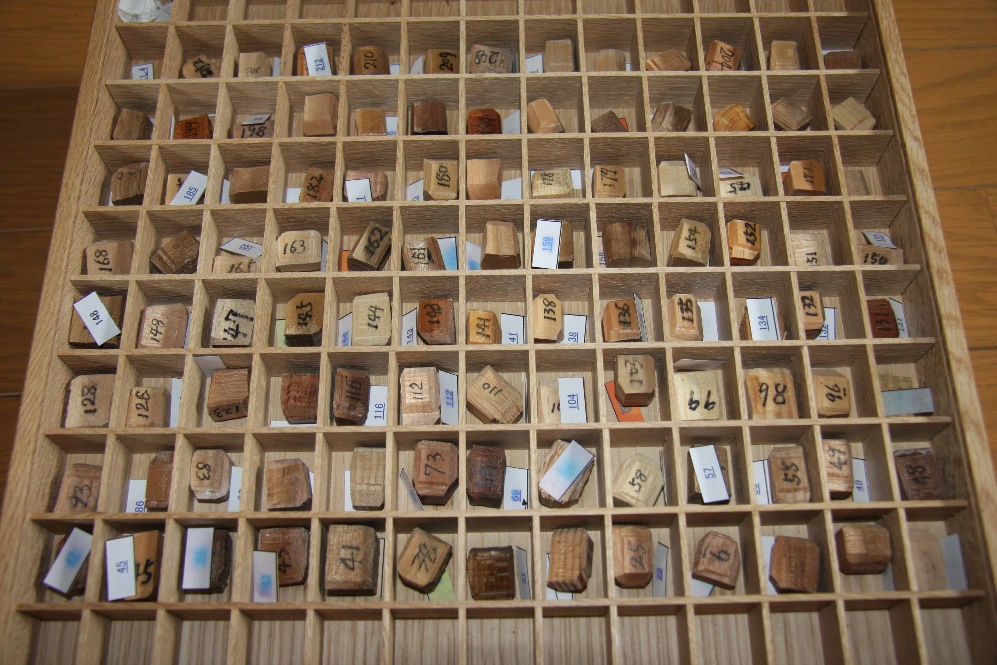
Figure 1. Wooden container for keeping wood blocks after microtome-sectioning.
When we started to construct a database of Chinese woods, we have compiled a list of all scientific and Chinese names given in the four-volume Atlas of Chinese trees (中国树木志), as a basic data source (2). We then used the “Flora of China” website as a reference for more up-to-date scientific and Chinese names of families, genera and species (3). The headings of species description include not only the latest scientific and Chinese names (in block letters), but also old scientific names and/or synonyms, and other Chinese names with pinyin (in non-block letters). After adding pinyin according to the “Flora of China”, some corrections were made according to the electronic document, “Correction of common names and unification of pinyin used for plants in ‘Flora of China’;《中国植物志》植物中文普通名的订正和读音的统一”(5).
In view of the fact that angiosperm classification by APG (Angiosperm Phylogeny Group) is increasingly accepted by the scientific community, we made a comparative table of the nomenclature of family and/or species names between FOC (Flora of China) and APG(see Table 4 in Appendix, in which tree species without any changes of family and/or species name are not included. Finally, the database was constructed to compare and search taxa used in APG IV and Flora of China (see contents “IV. Instructions for Database Search”).
As can be imagined from the background mentioned above, the scientific names used in our database are organized primarily according to the newer classification standard, “APG Ⅳ Web Site” (4) with some modification by K. Yonekura (6), and also according to “Flora of China Web Site” (3) for the convenience of easy access to the scientific names and various characteristics of most of the trees growing in China on the Internet.
Microscopic features are described according to the following standard:
The order and arrangement of wood species: Basically, family names, genus names within a family, and species names within a genus are arranged alphabetically in our database to facilitate sorting of family, genus and species by the users. In addition, the computer-assisted search is enabled for wood species according to the classification of APG Ⅳ or “Flora of China”.
Two-page spread: Data of each species are shown in a two-page spread, especially for eBook and paperback. The description of microscopic features, a map of species distribution, and a low magnification image are shown on one page, while 9 photomicrographs are shown on the other page.
Descriptions: The headings of the descriptions include “Scientific Name”, “Synonym” and “Vernacular Name”. “Softwood” or “Hardwood” and “Family/Genus names” appear on the left or right in the upper margin of each page. The height and diameter of the trees, their habitat and distribution area are given in "General". These information are mainly cited from “Atlas of Chinese Trees” or “Flora of China” (2, 3). The provincial distributions in “General” for most species are cited from the references listed in Table 5 and 6 in Chapter II and partly from “Flora of China” (3). Endemic species, and the categories of “critically endangered”, “endangered” or “vulnerable” species are also included in the “General” category. Microscopic features of each species are described in the order of the following items: “Growth rings”, “Tracheids”, “Axial parenchyma”, “Rays”, “Intercellular canals” for softwoods and “Growth rings”, “Vessels”, “Tracheids and Fibers”, “Axial parenchyma”, “Rays”, “Intercellular canals” or (“Tubes/tubules” or “Cambial variants”) for hardwoods. “Uses”, “IAWA Codes” and “Source of wood specimens” are described after microscopic features in both softwoods and hardwoods (7, 8).
Uses: Most data in Uses are based on the “Wood Atlas in China” by Cheng et al. (9), Sylva Sinica by Zheng (2) as well as the “Flora of China” online database (3). The various uses are arranged in a way, that first those entries are listed that reflect the characteristics of the respective wood species, like grain and color, or properties like strength and flexibility, and finally industrial uses, like electrical poles or pulp and paper. For technical terms in English relating to the wood and its use, we refer to Corkhill’s “The Complete Dictionary of Wood” (10). As for the specific uses of Buddhist or Deity sculptures, we refer to “The Study of Buddhist Sculptures from Japan and China Based on Wood Identification”, 2007, by Mertz and Itoh (11) and “A Study of the Wood Species of 73 Deity Sculptures of the Hunan Province, from the Patrice Fava Collection”, 2010, by Mertz and Itoh (12).
IAWA codes: Key microscopic features of individual wood species are abbreviated as IAWA codes for both, softwood and hardwood, according to the IAWA Lists of Microscopic Features for Softwood and Hardwood Identification (7, 8). IAWA codes for individual species were assessed strictly by the authors, to assist in the computerized wood identification module that forms the most useful part of this database, being explained in detail in the chapter IV “Instruction for database search”.
Source of wood specimens: Source of wood specimens are described using a collection acronym (Table 2). In some cases, a slide number is used as an alternative to the collection acronym for wood specimens.
Table 2. Collection acronym or other registered abbreviation in Xylarium.
| Collection acronym or other registered abbreviation | Collection affiliation |
|---|---|
| Banna | Nanjing Forestry University, China; specimen originated from Xishuangbanna |
| CSUFTw | Central South University of Forestry and Technology, China |
| Donglin | Northeast Forestry University, China |
| Guangxi | Nanjing Forestry University, China; specimen originated from Guangxi |
| Guizhou | Nanjing Forestry University, China; specimen originated from Guizhou Academy of Forestry |
| Hainan | Nanjing Forestry University, China; specimen originated from Hainan island |
| HU | Hokkaido University, Japan |
| KYOw | Research Institute for Sustainable Humanosphere, Kyoto University, Japan |
| Linkeyuan | Nanjing Forestry University, China; specimen originated from Wood Production Institute, Chinese Academy of Forestry, China |
| Nanlin | Nanjing Forestry University, China |
| OSAw | Osaka Museum of Natural History, Japan |
| PU | Peking University, China |
| Shaanxi | Nanjing Forestry University, China; specimen originated from Shaanxi |
| SWFUw | Southwest Forestry University, China |
| TAIFw | Forestry Research Institute, Taipei, Taiwan |
| Taiwan | Research Institute for Sustainable Humanosphere, Kyoto University, Japan; slides originated from Taiwan |
| TOFOw | Tokyo University, Japan |
| TWTw | Forestry and Forest Products Research Institute, Japan |
| Yunnan | Nanjing Forestry University, China; specimen originated from Yunnan |
Map of tree distribution: See details in chapter III (Construction of tree distribution maps in China).
Stereo microscope images: After preparing microscope slides, small wood blocks were stored in wooden containers, as shown in Fig. 1. Each container allowed storage of a maximum of 195 wood blocks. Wood blocks were observed with a stereo microscope (Leica Co. Ltd., MZ APO) and images were taken using a computer-assisted digital camera (Olympus Co. Ltd., DP-72) with Intralux 6000-1 as the source of illumination (Switzerland; Power:1, Intensity: Low). For species where no stereo microscope image is available, an optical microscope image was taken using a 2x lens and used in place of stereo microscope image.
Optical microscope images: Microscopic images of three different sections (cross, radial and tangential) were taken using a computer-assisted digital camera (Olympus Co., Ltd., DP-70) attached to an optical microscope (Olympus Co., Ltd., BH-2 and BX51) in the private house of editor-in-chief or in the laboratory of Biomass Morphogenesis and Information, Research Institute for Sustainable Humanosphere, Kyoto University, Uji, Kyoto, Japan.
Objective lenses used for microscopic observations were basically x2, x4, x10, x20, and x40. For some wood species, a photomicrograph was taken using a computer-assisted microscopic digital camera (Carl Zeiss Co., Ltd.) attached to an optical microscope (Carl Zeiss Co., Ltd., AXIO PHOTO) in the laboratory of Dendrochronological Dating section, Nara National Research Institute for Cultural Properties, Nara, Japan. A x2.5 objective lens was used for taking low magnification images of cross sections. Tangential sectional images of some hardwood samples with broad rays were often taken by a x2 objective lens. Optical microscope images of cross-field pittings in softwood and vessel-ray pittings in hardwood were always taken with a x40 objective lens. Commonly, images with three different magnifications of cross-, radial- and tangential-sections were taken for each sample to show various microscopic features.
Two additional tables are included as appendices to help readers use this database; one is a list of “Endemic and endangered species in this database” (Table 3) and the other a list of “Comparison of scientific names and family classification in FOC (Flora of China) and APG (Angiosperm Phylogeny) IV (Table 4). The former is cited from “Threatened Species List of China’s Higher Plants (1) reported by the Ministry of Environmental Protection in China in co-operation with the Chinese Academy of Sciences. The latter is basically in accordance with the FOC and APG IV with some modification by the recommendation of Koji Yonekura who is a distinguished plant taxonomist and an author of the reference (6).
Table 3. Endemic and endangered species in this database.
| No | Family | Family (Chinese) | Species | Vernacular name (Chinese) | Endemic | Categories in CITES and IUCN Red List* |
|---|---|---|---|---|---|---|
| Gymnospermae | ||||||
| 1 | Cupressaceae | 柏科 | Chamaecyparis formosensis | 红桧 | ◎ | Endangered |
| 2 | Cupressaceae | 柏科 | Chamaecyparis obtusa var. formosana | 台湾扁柏 | ◎ | Vulnerable |
| 3 | Cupressaceae | 柏科 | Cupressus duclouxiana | 干香柏 | ◎ | Vulnerable |
| 4 | Cupressaceae | 柏科 | Cupressus torulosa | 西藏柏木 | Endangered | |
| 5 | Cupressaceae | 柏科 | Fokienia hodginsii | 福建柏 | Vulnerable | |
| 6 | Cupressaceae | 柏科 | Glyptostrobus pensilis | 水松 | Critically Endangered | |
| 7 | Cupressaceae | 柏科 | Juniperus rigida | 杜松 | Endangered | |
| 8 | Cupressaceae | 柏科 | Metasequoia glyptostroboides | 水杉 | ◎ | Critically Endangered |
| 9 | Cupressaceae | 柏科 | Taiwania cryptomerioides | 台湾杉 | Vulnerable | |
| 10 | Ginkgoaceae | 银杏科 | Ginkgo biloba | 银杏 | ◎ | Critically Endangered |
| 11 | Pinaceae | 松科 | Abies chensiensis | 秦岭冷杉 | ◎ | Vulnerable |
| 12 | Pinaceae | 松科 | Abies fargesii | 巴山冷杉 | ◎ | Vulnerable |
| 13 | Pinaceae | 松科 | Abies nukiangensis | 怒江冷杉 | Vulnerable | |
| 14 | Pinaceae | 松科 | Abies sibirica | 鲜卑冷杉 | Vulnerable | |
| 15 | Pinaceae | 松科 | Cathaya argyrophylla | 银杉 | ◎ | Vulnerable |
| 16 | Pinaceae | 松科 | Cedrus deodara | 雪松 | Vulnerable | |
| 17 | Pinaceae | 松科 | Keteleeria davidiana | 铁坚油杉 | ◎ | Vulnerable |
| 18 | Pinaceae | 松科 | Keteleeria evelyniana | 云南油杉 | Vulnerable | |
| 19 | Pinaceae | 松科 | Keteleeria fortunei | 油杉 | Vulnerable | |
| 20 | Pinaceae | 松科 | Keteleeria fortunei var. cyclolepis | 江南油杉 | Vulnerable | |
| 21 | Pinaceae | 松科 | Larix gmelinii | 落叶松 | Vulnerable | |
| 22 | Pinaceae | 松科 | Larix gmelinii var. principis-rupprechtii | 华北落叶松 | ◎ | Vulnerable |
| 23 | Pinaceae | 松科 | Larix mastersiana | 四川红杉 | ◎ | Endangered |
| 24 | Pinaceae | 松科 | Larix sibirica | 新疆落叶松 | Vulnerable | |
| 25 | Pinaceae | 松科 | Larix speciosa | 怒江红杉 | ◎ | Critically Endangered |
| 26 | Pinaceae | 松科 | Picea meyeri | 白扦 | ◎ | Vulnerable |
| 27 | Pinaceae | 松科 | Picea morrisonicola | 台湾云杉 | ◎ | Endangered |
| 28 | Pinaceae | 松科 | Picea neoveitchii | 大果青扦 | ◎ | Vulnerable |
| 29 | Pinaceae | 松科 | Picea smithiana | 长叶云杉 | Endangered | |
| 30 | Pinaceae | 松科 | Pinus bungeana | 白皮松 | ◎ | Endangered |
| 31 | Pinaceae | 松科 | Pinus densiflora var. ussuriensis | 兴凯赤松 | Vulnerable | |
| 32 | Pinaceae | 松科 | Pinus kesiya | 卡西亚松 | Vulnerable | |
| 33 | Pinaceae | 松科 | Pinus koraiensis | 红松 | AppendixⅢ; Critically Endangered | |
| 34 | Pinaceae | 松科 | Pinus pumila | 偃松 | Critically Endangered | |
| 35 | Pinaceae | 松科 | Pinus roxburghii | 西藏长叶松 | Critically Endangered | |
| 36 | Pinaceae | 松科 | Pinus sibirica | 新疆五针松 | Vulnerable | |
| 37 | Pinaceae | 松科 | Pinus sylvestris var. mongolica | 樟子松 | Vulnerable | |
| 38 | Pinaceae | 松科 | Pinus sylvestris var. sylvestriformis | 长白松 | ◎ | Critically Endangered |
| 39 | Pinaceae | 松科 | Pinus tabuliformis var. henryi | 巴山松 | ◎ | Vulnerable |
| 40 | Pinaceae | 松科 | Pseudolarix amabilis | 金钱松 | ◎ | Vulnerable |
| 41 | Pinaceae | 松科 | Pseudotsuga sinensis | 黄杉 | ◎ | Vulnerable |
| 42 | Pinaceae | 松科 | Pseudotsuga sinensis var. wilsoniana | 台湾黄杉 | ◎ | Endangered |
| 43 | Pinaceae | 松科 | Tsuga chinensis var. forrestii | 丽江铁杉 | ◎ | Vulnerable |
| 44 | Pinaceae | 松科 | Tsuga dumosa | 云南铁杉 | Vulnerable | |
| 45 | Pinaceae | 松科 | Nothotsuga longibracteata(Tsuga longibracteata) | 长苞铁杉 | ◎ | Vulnerable |
| 46 | Podocarpaceae | 罗汉松科 | Dacrycarpus imbricatus var. patulus | 展叶鸡毛松 | Vulnerable | |
| 47 | Podocarpaceae | 罗汉松科 | Dacrydium pectinatum | 陆均松 | Endangered | |
| 48 | Podocarpaceae | 罗汉松科 | Nageia nagi | 竹柏 | Endangered | |
| 49 | Podocarpaceae | 罗汉松科 | Podocarpus macrophyllus | 罗汉松 | Vulnerable | |
| 50 | Podocarpaceae | 罗汉松科 | Podocarpus nakaii | 台湾罗汉松 | ◎ | Endangered |
| 51 | Podocarpaceae | 罗汉松科 | Podocarpus neriifolius | 百日青 | Appendix Ⅲ;Vulnerable | |
| 52 | Podocarpaceae | 罗汉松科 | Podocarpus wangii | 小叶罗汉松 | ◎ | Endangered |
| 53 | Taxaceae | 红豆杉科 | Amentotaxus argotaenia | 穗花杉 | Vulnerable | |
| 54 | Taxaceae | 红豆杉科 | Taxus wallichiana var. chinensis(Taxus chinensis) | 红豆杉 | Appendix Ⅱ;Endangered | |
| 55 | Taxaceae | 红豆杉科 | Taxus cuspidata | 东北红豆杉 | Appendix Ⅱ;Endangered | |
| 56 | Taxaceae | 红豆杉科 | Taxus wallichiana var. mairei(Taxus mairei) | 南方红豆杉 | Vulnerable | |
| 57 | Taxaceae | 红豆杉科 | Taxus wallichiana | 须弥红豆杉 | Appendix Ⅱ;Vulnerable | |
| Angiospermae | ||||||
| 58 | Aceraceae | 槭树科 | Acer mandshuricum | 东北槭 | Vulnerable | |
| 59 | Aceraceae | 槭树科 | Acer palmatum | 鸡爪槭 | Vulnerable | |
| 60 | Aceraceae | 槭树科 | Acer pilosum var. pilosum | 疏毛槭 | ◎ | Vulnerable |
| 61 | Anacardiaceae | 漆树科 | Dracontomelon macrocarpum | 大果人面子 | ◎ | Endangered |
| 62 | Anacardiaceae | 漆树科 | Mangifera sylvatica | 林生杧果 | Endangered | |
| 63 | Annonaceae | 番荔枝科 | Miliusa horsfieldii | 囊瓣木 | Vulnerable | |
| 64 | Annonaceae | 番荔枝科 | Mitrephora wangii | 云南银钩花 | Vulnerable | |
| 65 | Annonaceae | 番荔枝科 | Orophea hainanensis | 澄广花 | ◎ | Vulnerable |
| 66 | Araliaceae | 五加科 | Gamblea ciliata var. evodiifolia | 吴茱萸五加 | Vulnerable | |
| 67 | Araliaceae | 五加科 | Heteropanax yunnanensis | 云南幌伞枫 | ◎ | Endangered |
| 68 | Clethraceae | 山柳科 | Clethra fargesii | 城口桤叶树 | ◎ | Endangered |
| 69 | Clusiaceae | 藤黄科 | Garcinia kwangsiensis | 广西藤黄 | ◎ | Endangered |
| 70 | Clusiaceae | 藤黄科 | Garcinia paucinervis | 金丝李 | ◎ | Vulnerable |
| 71 | Combretaceae | 使君子科 | Lumnitzera littorea | 红榄李 | Vulnerable | |
| 72 | Combretaceae | 使君子科 | Terminalia bellirica | 毗黎勒 | Endangered | |
| 73 | Connaraceae | 牛栓藤科 | Ellipanthus glabrifolius | 单叶豆 | ◎ | Endangered |
| 74 | Dilleniaceae | 五桠果科 | Dillenia indica | 五桠果 | Endangered | |
| 75 | Dipentodontaceae | 十齿花科 | Perrottetia arisanensis | 台湾核子木 | ◎ | Vulnerable |
| 76 | Dipterocarpaceae | 龙脑香科 | Shorea chinensis (Hopea chinensis) | 狭叶坡垒 | Vulnerable | |
| 77 | Dipterocarpaceae | 龙脑香科 | Hopea hainanensis | 坡垒 | Endangered | |
| 78 | Dipterocarpaceae | 龙脑香科 | Shorea chinensis (Parashorea chinensis) | 望天树 | Endangered | |
| 79 | Dipterocarpaceae | 龙脑香科 | Vatica guangxiensis | 广西青梅 | Critically Endangered | |
| 80 | Dipterocarpaceae | 龙脑香科 | Vatica mangachapoi | 青梅 | Vulnerable | |
| 81 | Elaeocarpaceae | 杜英科 | Elaeocarpus austroyunnanensis | 滇南杜英 | ◎ | Vulnerable |
| 82 | Elaeocarpaceae | 杜英科 | Elaeocarpus nitentifolius | 绢毛杜英 | Vulnerable | |
| 83 | Erythroxylaceae | 古柯科 | Ixonanthes reticulata | 粘木 | Vulnerable | |
| 84 | Eucommiaceae | 杜仲科 | Eucommia ulmoides | 杜仲 | ◎ | Vulnerable |
| 85 | Euphorbiaceae | 大戟科 | Cephalomappa sinensis | 肥牛树 | Vulnerable | |
| 86 | Euphorbiaceae | 大戟科 | Deutzianthus tonkinensis | 东京桐 | Endangered | |
| 87 | Fabaceae | 豆科 | Acrocarpus fraxinifolius | 顶果木 | Vulnerable | |
| 88 | Fabaceae | 豆科 | Dalbergia assamica | 秧青 | Endangered | |
| 89 | Fabaceae | 豆科 | Dalbergia cultrata | 黑黄檀 | Vulnerable | |
| 90 | Fabaceae | 豆科 | Dalbergia obtusifolia | 钝叶黄檀 | ◎ | Endangered |
| 91 | Fabaceae | 豆科 | Dalbergia odorifera | 降香黄檀 | ◎ | Appendix Ⅲ;Critically Endangered |
| 92 | Fabaceae | 豆科 | Erythrophleum fordii | 格木 | ◎ | Vulnerable |
| 93 | Fabaceae | 豆科 | Ormosia henryi | 花榈木 | Vulnerable | |
| 94 | Fabaceae | 豆科 | Ormosia hosiei | 红豆树 | ◎ | Endangered |
| 95 | Fabaceae | 豆科 | Ormosia yunnanensis | 云南红豆 | ◎ | Critically Endangered |
| 96 | Fabaceae | 豆科 | Peltophorum tonkinense | 银珠 | Endangered | |
| 97 | Fabaceae | 豆科 | Pterocarpus indicus | 紫檀 | Critically Endangered | |
| 98 | Fabaceae | 豆科 | Pterocarpus santalinus | 檀香紫檀 | Appendix Ⅱ | |
| 99 | Fabaceae | 豆科 | Saraca dives | 中国无忧花 | Vulnerable | |
| 100 | Fabaceae | 豆科 | Sindora glabra | 油楠 | Vulnerable | |
| 101 | Fabaceae | 豆科 | Zenia insignis | 任豆 | Vulnerable | |
| 102 | Fagaceae | 壳斗科 | Castanopsis hainanensis | 海南栲 | ◎ | Vulnerable |
| 103 | Fagaceae | 壳斗科 | Castanopsis kawakamii | 青钩栲 | Vulnerable | |
| 104 | Fagaceae | 壳斗科 | Castanopsis rufotomentosa | 红壳锥 | ◎ | Critically Endangered |
| 105 | Fagaceae | 壳斗科 | Quercus tenuicupula(Cyclobalanopsis tenuicupula) | 薄斗青冈 | ◎ | Critically Endangered |
| 106 | Fagaceae | 壳斗科 | Trigonobalanus doichangensis(Formanodendron doichangensis) | 三棱栎 | Vulnerable | |
| 107 | Fagaceae | 壳斗科 | Lithocarpus fenzelianus | 红柯 | ◎ | Endangered |
| 108 | Fagaceae | 壳斗科 | Lithocarpus fohaiensis | 勐海柯 | ◎ | Vulnerable |
| 109 | Fagaceae | 壳斗科 | Lithocarpus fordianus | 命脉柯 | Vulnerable | |
| 110 | Fagaceae | 壳斗科 | Quercus mongolica | 蒙栎 | Appendix Ⅲ | |
| 111 | Flacourtiaceae | 大风子科 | Gynocardia odorata | 马蛋果 | Endangered | |
| 112 | Flacourtiaceae | 大风子科 | Homalium ceylanicum | 斯里兰卡天料木 | Vulnerable | |
| 113 | Flacourtiaceae | 大风子科 | Hydnocarpus hainanensis | 海南大风子 | Vulnerable | |
| 114 | Hamamelidaceae | 金缕梅科 | Liquidambar yunnanensis(Altingia yunnanensis) | 云南蕈树 | ◎ | Endangered |
| 115 | Hamamelidaceae | 金缕梅科 | Chunia bucklandioides | 山铜材 | ◎ | Endangered |
| 116 | Hamamelidaceae | 金缕梅科 | Fortunearia sinensis | 牛鼻栓 | ◎ | Vulnerable |
| 117 | Hamamelidaceae | 金缕梅科 | Mytilaria laosensis | 壳菜果 | Vulnerable | |
| 118 | Hippocastanaceae | 七叶树科 | Handeliodendron bodinieri | 掌叶木 | ◎ | Endangered |
| 119 | Icacinaceae | 茶茱萸科 | Platea parvifolia | 东方肖榄 | ◎ | Critically Endangered |
| 120 | Juglandaceae | 胡桃科 | Carya cathayensis | 山核桃 | ◎ | Vulnerable |
| 121 | Juglandaceae | 胡桃科 | Juglans regia | 胡桃 | Vulnerable | |
| 122 | Juglandaceae | 胡桃科 | Pterocarya tonkinensis | 越南枫杨 | Vulnerable | |
| 123 | Lauraceae | 樟科 | Actinodaphne henryi | 思茅黄肉楠 | Vulnerable | |
| 124 | Lauraceae | 樟科 | Alseodaphne hainanensis | 油丹 | Vulnerable | |
| 125 | Lauraceae | 樟科 | Cinnamomum insularimontanum(Cinnamomum japonicum) | 天竺桂 | Vulnerable | |
| 126 | Lauraceae | 樟科 | Cinnamomum micranthum | 沉水樟 | Vulnerable | |
| 127 | Lauraceae | 樟科 | Litsea auriculata | 天目木姜子 | ◎ | Vulnerable |
| 128 | Lauraceae | 樟科 | Litsea szemaois | 思茅木姜子 | ◎ | Critically Endangered |
| 129 | Lauraceae | 樟科 | Machilus nanmu | 润楠 | ◎ | Endangered |
| 130 | Lauraceae | 樟科 | Neolitsea obtusifolia | 钝叶新木姜子 | ◎ | Vulnerable |
| 131 | Lauraceae | 樟科 | Neolitsea shingningensis | 新宁新木姜子 | ◎ | Vulnerable |
| 132 | Lauraceae | 樟科 | Phoebe bournei | 闽楠 | ◎ | Vulnerable |
| 133 | Lauraceae | 樟科 | Phoebe puwenensis | 普文楠 | ◎ | Vulnerable |
| 134 | Lauraceae | 樟科 | Phoebe zhennan | 楠木 | ◎ | Vulnerable |
| 135 | Lauraceae | 樟科 | Syndiclis lotungensis | 乐东油果樟 | ◎ | Critically Endangered |
| 136 | Lecythidaceae | 玉蕊科 | Barringtonia fusicarpa | 梭果玉蕊 | ◎ | Vulnerable |
| 137 | Lecythidaceae | 玉蕊科 | Barringtonia racemosa | 玉蕊 | Endangered | |
| 138 | Lythraceae | 千屈菜科 | Lagerstroemia balansae | 毛萼紫薇 | Endangered | |
| 139 | Lythraceae | 千屈菜科 | Lagerstroemia intermedia | 云南紫薇 | Vulnerable | |
| 140 | Magnoliaceae | 木兰科 | Magnolia cathcartii(Alcimandra cathcartii) | 长蕊木兰 | Vulnerable | |
| 141 | Magnoliaceae | 木兰科 | Magnolia henryi (Lirianthe henryi) | 大叶木兰 | Endangered | |
| 142 | Magnoliaceae | 木兰科 | Magnolia aromatica(Manglietia aromatica) | 香木莲 | Vulnerable | |
| 143 | Magnoliaceae | 木兰科 | Magnolia fordiana var. forrestii(Manglietia forrestii) | 滇桂木莲 | Vulnerable | |
| 144 | Magnoliaceae | 木兰科 | Magnolia kwangtungensis(Manglietia kwangtungensis) | 毛桃木莲 | ◎ | Vulnerable |
| 145 | Magnoliaceae | 木兰科 | Magnolia baillonii (Michelia baillonii) | 合果木 | Vulnerable | |
| 146 | Magnoliaceae | 木兰科 | Magnolia crassipes (Michelia crassipes) | 紫花含笑 | ◎ | Endangered |
| 147 | Magnoliaceae | 木兰科 | Magnolia odora (Michelia odora) | 观光木 | Vulnerable | |
| 148 | Magnoliaceae | 木兰科 | Magnolia globosa (Oyama globosa) | 毛叶天女花 | Vulnerable | |
| 149 | Magnoliaceae | 木兰科 | Magnolia lotungensis(Parakmeria lotungensis) | 乐东拟单性木兰 | ◎ | Vulnerable |
| 150 | Magnoliaceae | 木兰科 | Magnolia amoena (Yulania amoena) | 天目玉兰 | ◎ | Vulnerable |
| 151 | Magnoliaceae | 木兰科 | Magnolia campbellii(Yulania campbellii) | 滇藏玉兰 | Vulnerable | |
| 152 | Magnoliaceae | 木兰科 | Magnolia liliflora (Yulania liliiflora) | 紫玉兰 | ◎ | Vulnerable |
| 153 | Magnoliaceae | 木兰科 | Magnolia sargentiana(Yulania sargentiana) | 凹叶玉兰 | ◎ | Vulnerable |
| 154 | Meliaceae | 楝科 | Aglaia lawii | 望谟崖摩 | Vulnerable | |
| 155 | Meliaceae | 楝科 | Toona ciliata | 红椿 | Vulnerable | |
| 156 | Meliaceae | 楝科 | Swietenia macrophylla | 大叶桃花心木 | Appendix Ⅲ | |
| 157 | Meliaceae | 楝科 | Swietenia mahagoni | 桃花心木 | Appendix Ⅲ | |
| 158 | Moraceae | 桑科 | Artocarpus hypargyreus | 白桂木 | ◎ | Endangered |
| 159 | Moraceae | 桑科 | Artocarpus lakoocha | 野波罗蜜 | Vulnerable | |
| 160 | Myrtaceae | 桃金娘科 | Syzygium brachythyrsum | 短序蒲桃 | ◎ | Endangered |
| 161 | Oleaceae | 木犀科 | Fraxinus hupehensis | 湖北白蜡 | ◎ | Endangered |
| 162 | Proteaceae | 山龙眼科 | Helicia tsaii | 潞西山龙眼 | ◎ | Vulnerable |
| 163 | Rosaceae | 蔷薇科 | Pyrus pashia (Malus sikkimensis) | 锡金海棠 | Vulnerable | |
| 164 | Rubiaceae | 茜草科 | Adina cordifolia (Haldina cordifolia) | 心叶木 | Vulnerable | |
| 165 | Rubiaceae | 茜草科 | Nauclea officinalis | 乌檀 | Vulnerable | |
| 166 | Rutaceae | 芸香科 | Phellodendron amurense | 黄檗 | Vulnerable | |
| 167 | Salicaceae | 杨柳科 | Salix arbutifolia (Chosenia arbutifolia) | 钻天柳 | Vulnerable | |
| 168 | Sapindaceae | 无患子科 | Amesiodendron chinense | 细子龙 | Vulnerable | |
| 169 | Sapindaceae | 无患子科 | Dimocarpus longan | 龙眼 | Vulnerable | |
| 170 | Sapindaceae | 无患子科 | Litchi chinensis | 荔枝 | Endangered | |
| 171 | Sapindaceae | 无患子科 | Mischocarpus hainanensis | 海南柄果木 | ◎ | Vulnerable |
| 172 | Sapotaceae | 山榄科 | Madhuca hainanensis | 海南紫荆木 | ◎ | Vulnerable |
| 173 | Sapotaceae | 山榄科 | Madhuca pasquieri | 紫荆木 | Vulnerable | |
| 174 | Sapotaceae | 山榄科 | Pouteria grandifolia | 龙果 | Endangered | |
| 175 | Stachyuraceae | 旌节花科 | Stachyurus yunnanensis | 云南旌节花 | Vulnerable | |
| 176 | Sterculiaceae | 梧桐科 | Firmiana major | 云南梧桐 | ◎ | Endangered |
| 177 | Sterculiaceae | 梧桐科 | Heritiera angustata | 长柄银叶树 | Endangered | |
| 178 | Sterculiaceae | 梧桐科 | Heritiera littoralis | 银叶树 | Vulnerable | |
| 179 | Sterculiaceae | 梧桐科 | Heritiera parvifolia | 蝴蝶树 | Vulnerable | |
| 180 | Sterculiaceae | 梧桐科 | Pterospermum menglunense | 勐仑翅子树 | ◎ | Endangered |
| 181 | Sterculiaceae | 梧桐科 | Reevesia pycnantha | 密花梭罗 | ◎ | Vulnerable |
| 182 | Styracaceae | 安息香科 | Rehderodendron macrocarpum | 木瓜红 | Vulnerable | |
| 183 | Tetracentraceae | 水青树科 | Tetracentron sinense | 水青树 | Appendix Ⅲ | |
| 184 | Theaceae | 山茶科 | Camellia indochinensis var. indochinensis | 柠檬金花茶 | Vulnerable | |
| 185 | Theaceae | 山茶科 | Eurya megatrichocarpa | 大果毛柃 | Endangered | |
| 186 | Theaceae | 山茶科 | Stewartia calcicola | 云南紫茎 | ◎ | Endangered |
| 187 | Thymelaeaceae | 瑞香科 | Aquilaria sinensis | 土沉香 | ◎ | Appendix Ⅲ;Vulnerable |
| 188 | Tiliaceae | 椴树科 | Burretiodendron esquirolii | 柄翅果 | Vulnerable | |
| 189 | Tiliaceae | 椴树科 | Diplodiscus trichospermus | 海南椴 | ◎ | Vulnerable |
| 190 | Tiliaceae | 椴树科 | Burretiodendron obconicum (Excentrodendron obconicum) | 长蒴蚬木 | ◎ | Critically Endangered |
| 191 | Tiliaceae | 椴树科 | Excentrodendron tonkinense(Burretiodendron hsienmu) | 蚬木 | Endangered | |
| 192 | Tiliaceae | 椴树科 | Microcos chungii | 海南破布叶 | Vulnerable | |
| 193 | Tiliaceae | 椴树科 | Tilia miqueliana | 南京椴 | Vulnerable | |
| 194 | Trochodendraceae | 昆栏树科 | Trochodendron aralioides | 昆栏树 | Vulnerable | |
| 195 | Ulmaceae | 榆科 | Ulmus elongata | 长序榆 | ◎ | Endangered |
| 196 | Verbenaceae | 马鞭草科 | Gmelina arborea | 云南石梓 | Vulnerable | |
| 197 | Verbenaceae | 马鞭草科 | Vitex pierreana | 莺哥木 | Vulnerable | |
Table 4. Comparative scientific name between FOC* and APG IV** in this database.
| No. | Family by FOC | Species by FOC | Family by APG IV | Species by APG IV |
|---|---|---|---|---|
| Gymnospermae | ||||
| 1 | Taxodiaceae | Cryptomeria japonica var. sinensis | Cupressaceae | Cryptomeria japonica var. sinensis |
| 2 | Taxodiaceae | Cunninghamia lanceolata | Cupressaceae | Cunninghamia lanceolata |
| 3 | Cupressaceae | Cupressus funebris | Cupressaceae | Cupressus pendula |
| 4 | Taxodiaceae | Glyptostrobus pensilis | Cupressaceae | Glyptostrobus pensilis |
| 5 | Taxodiaceae | Metasequoia glyptostroboides | Cupressaceae | Metasequoia glyptostroboides |
| 6 | Taxodiaceae | Taiwania cryptomerioides | Cupressaceae | Taiwania cryptomerioides |
| 7 | Taxodiaceae | Taxodium distichum | Cupressaceae | Taxodium distichum |
| 8 | Pinaceae | Tsuga longibracteata | Pinaceae | Nothotsuga longibracteata |
| 9 | Cephalotaxaceae | Cephalotaxus fortunei | Taxaceae | Cephalotaxus fortunei |
| 10 | Cephalotaxaceae | Cephalotaxus mannii | Taxaceae | Cephalotaxus mannii |
| 11 | Cephalotaxaceae | Cephalotaxus sinensis | Taxaceae | Cephalotaxus sinensis |
| Angiospermae | ||||
| 12 | Verbenaceae | Avicennia marina | Acanthaceae | Avicennia marina |
| 13 | Flacourtiaceae | Gynocardia odorata | Achariaceae | Gynocardia odorata |
| 14 | Flacourtiaceae | Hydnocarpus hainanensis | Achariaceae | Hydnocarpus hainanensis |
| 15 | Bretschneideraceae | Bretschneidera sinensis | Akaniaceae | Bretschneidera sinensis |
| 16 | Hamamelidaceae | Altingia chinensis | Altingiaceae | Liquidambar chinensis |
| 17 | Hamamelidaceae | Semiliquidambar chingii | Altingiaceae | Liquidambar chingii |
| 18 | Hamamelidaceae | Altingia excelsa | Altingiaceae | Liquidambar excelsa |
| 19 | Hamamelidaceae | Liquidambar formosana | Altingiaceae | Liquidambar formosana |
| 20 | Hamamelidaceae | Altingia gracilipes | Altingiaceae | Liquidambar gracilipes |
| 21 | Hamamelidaceae | Altingia yunnanensis | Altingiaceae | Liquidambar yunnanensis |
| 22 | Anacardiaceae | Spondias lakonensis | Anacardiaceae | Spondias lakonensis Pierre |
| 23 | Araliaceae | Tupidanthus calyptratus | Araliaceae | Schefflera pueckleri |
| 24 | Bignoniaceae | Mayodendron igneum | Bignoniaceae | Radermachera ignea |
| 25 | Clusiaceae | Calophyllum inophyllum | Calophyllaceae | Calophyllum inophyllum |
| 26 | Clusiaceae | Mesua ferrea | Calophyllaceae | Mesua ferrea |
| 27 | Ulmaceae | Aphananthe aspera | Cannabaceae | Aphananthe aspera |
| 28 | Ulmaceae | Celtis biondii | Cannabaceae | Celtis biondii |
| 29 | Ulmaceae | Celtis bungeana | Cannabaceae | Celtis bungeana |
| 30 | Ulmaceae | Celtis julianae | Cannabaceae | Celtis julianae |
| 31 | Ulmaceae | Celtis philippensis | Cannabaceae | Celtis philippensis |
| 32 | Ulmaceae | Celtis sinensis | Cannabaceae | Celtis sinensis |
| 33 | Ulmaceae | Celtis tetrandra | Cannabaceae | Celtis tetrandra |
| 34 | Ulmaceae | Celtis vandervoetiana | Cannabaceae | Celtis vandervoetiana |
| 35 | Ulmaceae | Gironniera subaequalis | Cannabaceae | Gironniera subaequalis |
| 36 | Ulmaceae | Pteroceltis tatarinowii | Cannabaceae | Pteroceltis tatarinowii |
| 37 | Ulmaceae | Trema angustifolia | Cannabaceae | Trema angustifolia |
| 38 | Ulmaceae | Trema orientalis | Cannabaceae | Trema orientalis |
| 39 | Icacinaceae | Gonocaryum lobbianum | Cardiopteridaceae | Gonocaryum lobbianum |
| 40 | Combretaceae | Anogeissus acuminata | Combretaceae | Terminalia phillyreifolia |
| 41 | Alangiaceae | Alangium chinense | Cornaceae | Alangium chinense |
| 42 | Alangiaceae | Alangium kurzii | Cornaceae | Alangium kurzii |
| 43 | Alangiaceae | Alangium kurzii var. handelii | Cornaceae | Alangium kurzii var. handelii |
| 44 | Alangiaceae | Alangium platanifolium var. trilobatum | Cornaceae | Alangium platanifolium var. trilobatum |
| 45 | Dipterocarpaceae | Parashorea chinensis | Dipterocarpaceae | Shorea chinensis |
| 46 | Elaeocarpaceae | Elaeocarpus decipiens | Elaeocarpaceae | Elaeocarpus zollingeri |
| 47 | Saxifragaceae | Polyosma cambodiana | Escalloniaceae | Polyosma cambodiana |
| 48 | Euphorbiaceae | Trevia nudiflora | Euphorbiaceae | Mallotus nudiflorus |
| 49 | Fabaceae | Caesalpinia decapetala | Fabaceae | Biancaea decapetala |
| 50 | Fabaceae | Caesalpinia sappan | Fabaceae | Biancaea sappan |
| 51 | Fabaceae | Acacia catechu | Fabaceae | Senegalia catechu |
| 52 | Fagaceae | Cyclobalanopsis bella | Fagaceae | Quercus bella |
| 53 | Fagaceae | Cyclobalanopsis blakei | Fagaceae | Quercus blakei |
| 54 | Fagaceae | Cyclobalanopsis championii | Fagaceae | Quercus championii |
| 55 | Fagaceae | Cyclobalanopsis chungii | Fagaceae | Quercus chungii |
| 56 | Fagaceae | Cyclobalanopsis delavayi | Fagaceae | Quercus delavayi |
| 57 | Fagaceae | Cyclobalanopsis gambleana | Fagaceae | Quercus gambleana |
| 58 | Fagaceae | Cyclobalanopsis gilva | Fagaceae | Quercus gilva |
| 59 | Fagaceae | Cyclobalanopsis glauca | Fagaceae | Quercus glauca |
| 60 | Fagaceae | Cyclobalanopsis helferiana | Fagaceae | Quercus helferiana |
| 61 | Fagaceae | Cyclobalanopsis hui | Fagaceae | Quercus hui |
| 62 | Fagaceae | Cyclobalanopsis longinux | Fagaceae | Quercus longinux |
| 63 | Fagaceae | Cyclobalanopsis myrsinifolia | Fagaceae | Quercus myrsinifolia |
| 64 | Fagaceae | Cyclobalanopsis neglecta | Fagaceae | Quercus neglecta |
| 65 | Fagaceae | Cyclobalanopsis oxyodon | Fagaceae | Quercus oxyodon |
| 66 | Fagaceae | Cyclobalanopsis pachyloma | Fagaceae | Quercus pachyloma |
| 67 | Fagaceae | Cyclobalanopsis patelliformis | Fagaceae | Quercus patelliformis |
| 68 | Fagaceae | Cyclobalanopsis glaucoides | Fagaceae | Quercus schottkyana |
| 69 | Fagaceae | Cyclobalanopsis sessilifolia | Fagaceae | Quercus sessilifolia |
| 70 | Fagaceae | Cyclobalanopsis tenuicupula | Fagaceae | Quercus tenuicupula |
| 71 | Fagaceae | Formanodendron doichangensis | Fagaceae | Trigonobalanus doichangensis |
| 72 | Aucubaceae | Aucuba chinensis | Garryaceae | Aucuba chinensis |
| 73 | Saxifragaceae | Deutzia crenata | Hydrangeaceae | Deutzia crenata |
| 74 | Saxifragaceae | Hydrangea aspera | Hydrangeaceae | Hydrangea aspera |
| 75 | Saxifragaceae | Hydrangea bretschneideri | Hydrangeaceae | Hydrangea bretschneideri |
| 76 | Saxifragaceae | Hydrangea paniculata | Hydrangeaceae | Hydrangea paniculata |
| 77 | Clusiaceae | Cratoxylum cochinchinense | Hypericaceae | Cratoxylum cochinchinense |
| 78 | Clusiaceae | Cratoxylum formosum subsp. pruniflorum | Hypericaceae | Cratoxylum formosum subsp. pruniflorum |
| 79 | Clusiaceae | Hypericum monogynum | Hypericaceae | Hypericum monogynum |
| 80 | Saxifragaceae | Itea chinensis | Iteaceae | Itea chinensis |
| 81 | Erythroxylaceae | Ixonanthes reticulata | Ixonanthaceae | Ixonanthes reticulata |
| 82 | Rhoipteleaceae | Rhoiptelea chiliantha | Juglandaceae | Rhoiptelea chiliantha |
| 83 | Verbenaceae | Callicarpa arborea | Lamiaceae | Callicarpa arborea |
| 84 | Verbenaceae | Callicarpa japonica | Lamiaceae | Callicarpa japonica |
| 85 | Verbenaceae | Callicarpa macrophylla | Lamiaceae | Callicarpa macrophylla |
| 86 | Verbenaceae | Clerodendrum mandarinorum | Lamiaceae | Clerodendrum mandarinorum |
| 87 | Verbenaceae | Clerodendrum trichotomum | Lamiaceae | Clerodendrum trichotomum |
| 88 | Verbenaceae | Gmelina arborea | Lamiaceae | Gmelina arborea |
| 89 | Verbenaceae | Gmelina chinensis | Lamiaceae | Gmelina chinensis |
| 90 | Verbenaceae | Gmelina hainanensis | Lamiaceae | Gmelina hainanensis |
| 91 | Verbenaceae | Premna szemaoensis | Lamiaceae | Premna szemaoensis |
| 92 | Verbenaceae | Tectona grandis | Lamiaceae | Tectona grandis |
| 93 | Verbenaceae | Vitex pierreana | Lamiaceae | Vitex pierreana |
| 94 | Verbenaceae | Vitex quinata | Lamiaceae | Vitex quinata |
| 95 | Verbenaceae | Vitex tripinnata | Lamiaceae | Vitex tripinnata |
| 96 | Lauraceae | Cinnamomum japonicum | Lauraceae | Cinnamomum insularimontanum |
| 97 | Lauraceae | Neolitsea aurata | Lauraceae | Neolitsea sericea var. aurata |
| 98 | Magnoliaceae | Yulania amoena | Magnoliaceae | Magnolia amoena |
| 99 | Magnoliaceae | Manglietia aromatica | Magnoliaceae | Magnolia aromatica |
| 100 | Magnoliaceae | Michelia baillonii | Magnoliaceae | Magnolia baillonii |
| 101 | Magnoliaceae | Yulania campbellii | Magnoliaceae | Magnolia campbellii |
| 102 | Magnoliaceae | Alcimandra cathcartii | Magnoliaceae | Magnolia cathcartii |
| 103 | Magnoliaceae | Michelia chapensis | Magnoliaceae | Magnolia chapensis |
| 104 | Magnoliaceae | Michelia compressa | Magnoliaceae | Magnolia compressa |
| 105 | Magnoliaceae | Manglietia conifera | Magnoliaceae | Magnolia conifera |
| 106 | Magnoliaceae | Michelia crassipes | Magnoliaceae | Magnolia crassipes |
| 107 | Magnoliaceae | Yulania cylindrica | Magnoliaceae | Magnolia cylindrica |
| 108 | Magnoliaceae | Lirianthe delavayi | Magnoliaceae | Magnolia delavayi |
| 109 | Magnoliaceae | Yulania denudata | Magnoliaceae | Magnolia denudata |
| 110 | Magnoliaceae | Michelia wilsonii | Magnoliaceae | Magnolia ernestii |
| 111 | Magnoliaceae | Michelia figo | Magnoliaceae | Magnolia figo |
| 112 | Magnoliaceae | Michelia floribunda | Magnoliaceae | Magnolia floribunda |
| 113 | Magnoliaceae | Manglietia fordiana | Magnoliaceae | Magnolia fordiana |
| 114 | Magnoliaceae | Manglietia forrestii | Magnoliaceae | Magnolia fordiana var. forrestii |
| 115 | Magnoliaceae | Manglietia fordiana var. hainanensis | Magnoliaceae | Magnolia fordiana var. hainanensis |
| 116 | Magnoliaceae | Michelia foveolata | Magnoliaceae | Magnolia foveolata |
| 117 | Magnoliaceae | Oyama globosa | Magnoliaceae | Magnolia globosa |
| 118 | Magnoliaceae | Lirianthe henryi | Magnoliaceae | Magnolia henryi |
| 119 | Magnoliaceae | Michelia hypolampra | Magnoliaceae | Magnolia hypolampra |
| 120 | Magnoliaceae | Parakmeria kachirachirai | Magnoliaceae | Magnolia kachirachirai |
| 121 | Magnoliaceae | Manglietia kwangtungensis | Magnoliaceae | Magnolia kwangtungensis |
| 122 | Magnoliaceae | Yulania liliiflora | Magnoliaceae | Magnolia liliflora |
| 123 | Magnoliaceae | Parakmeria lotungensis | Magnoliaceae | Magnolia lotungensis |
| 124 | Magnoliaceae | Michelia macclurei | Magnoliaceae | Magnolia macclurei |
| 125 | Magnoliaceae | Michelia maudiae | Magnoliaceae | Magnolia maudiae |
| 126 | Magnoliaceae | Michelia odora | Magnoliaceae | Magnolia odora |
| 127 | Magnoliaceae | Houpoëa officinalis | Magnoliaceae | Magnolia officinalis |
| 128 | Magnoliaceae | Yulania sargentiana | Magnoliaceae | Magnolia sargentiana |
| 129 | Magnoliaceae | Yulania sprengeri | Magnoliaceae | Magnolia sprengeri |
| 130 | Magnoliaceae | Michelia x alba | Magnoliaceae | Magnolia x alba |
| 131 | Tiliaceae | Berrya cordifolia | Malvaceae | Berrya cordifolia |
| 132 | Bombacaceae | Bombax ceiba | Malvaceae | Bombax ceiba |
| 133 | Tiliaceae | Burretiodendron esquirolii | Malvaceae | Burretiodendron esquirolii |
| 134 | Tiliaceae | Excentrodendron tonkinense | Malvaceae | Burretiodendron hsienmu |
| 135 | Tiliaceae | Excentrodendron obconicum | Malvaceae | Burretiodendron obconicum |
| 136 | Bombacaceae | Ceiba pentandra | Malvaceae | Ceiba pentandra |
| 137 | Tiliaceae | Colona floribunda | Malvaceae | Colona floribunda |
| 138 | Tiliaceae | Colona thorelii | Malvaceae | Colona thorelii |
| 139 | Sterculiaceae | Eriolaena spectabilis | Malvaceae | Eriolaena spectabilis |
| 140 | Sterculiaceae | Firmiana colorata | Malvaceae | Firmiana colorata |
| 141 | Sterculiaceae | Firmiana major | Malvaceae | Firmiana major |
| 142 | Sterculiaceae | Firmiana simplex | Malvaceae | Firmiana simplex |
| 143 | Tiliaceae | Grewia eriocarpa | Malvaceae | Grewia eriocarpa |
| 144 | Sterculiaceae | Heritiera angustata | Malvaceae | Heritiera angustata |
| 145 | Sterculiaceae | Heritiera littoralis | Malvaceae | Heritiera littoralis |
| 146 | Sterculiaceae | Heritiera parvifolia | Malvaceae | Heritiera parvifolia |
| 147 | Tiliaceae | Microcos chungii | Malvaceae | Microcos chungii |
| 148 | Tiliaceae | Microcos paniculata | Malvaceae | Microcos paniculata |
| 149 | Bombacaceae | Ochroma lagopus | Malvaceae | Ochroma lagopus |
| 150 | Sterculiaceae | Pterospermum heterophyllum | Malvaceae | Pterospermum heterophyllum |
| 151 | Sterculiaceae | Pterospermum lanceifolium | Malvaceae | Pterospermum lanceifolium |
| 152 | Sterculiaceae | Pterospermum menglunense | Malvaceae | Pterospermum menglunense |
| 153 | Sterculiaceae | Pterygota alata | Malvaceae | Pterygota alata |
| 154 | Sterculiaceae | Reevesia pubescens | Malvaceae | Reevesia pubescens |
| 155 | Sterculiaceae | Reevesia pycnantha | Malvaceae | Reevesia pycnantha |
| 156 | Sterculiaceae | Sterculia hainanensis | Malvaceae | Sterculia hainanensis |
| 157 | Sterculiaceae | Sterculia lanceolata | Malvaceae | Sterculia lanceolata |
| 158 | Sterculiaceae | Sterculia monosperma var. monosperma | Malvaceae | Sterculia monosperma var. monosperma |
| 159 | Sterculiaceae | Sterculia pexa | Malvaceae | Sterculia pexa |
| 160 | Sterculiaceae | Sterculia villosa | Malvaceae | Sterculia villosa |
| 161 | Tiliaceae | Tilia amurensis | Malvaceae | Tilia amurensis |
| 162 | Tiliaceae | Tilia chinensis | Malvaceae | Tilia chinensis |
| 163 | Tiliaceae | Tilia mandshurica | Malvaceae | Tilia mandshurica |
| 164 | Tiliaceae | Tilia miqueliana | Malvaceae | Tilia miqueliana |
| 165 | Tiliaceae | Tilia paucicostata | Malvaceae | Tilia paucicostata |
| 166 | Tiliaceae | Tilia tuan | Malvaceae | Tilia tuan |
| 167 | Icacinaceae | Apodytes dimidiata | Metteniusaceae | Apodytes dimidiata |
| 168 | Icacinaceae | Platea latifolia | Metteniusaceae | Platea latifolia |
| 169 | Icacinaceae | Platea parvifolia | Metteniusaceae | Platea parvifolia |
| 170 | Myricaceae | Myrica esculenta | Myricaceae | Morella esculenta |
| 171 | Myricaceae | Myrica rubra | Myricaceae | Morella rubra |
| 172 | Mastixiaceae | Diplopanax stachyanthus | Nyssaceae | Diplopanax stachyanthus |
| 173 | Scrophulariaceae | Paulownia catalpifolia | Paulowniaceae | Paulownia catalpifolia |
| 174 | Scrophulariaceae | Paulownia elongata | Paulowniaceae | Paulownia elongata |
| 175 | Scrophulariaceae | Paulownia fargesii | Paulowniaceae | Paulownia fargesii |
| 176 | Scrophulariaceae | Paulownia fortunei | Paulowniaceae | Paulownia fortunei |
| 177 | Scrophulariaceae | Paulownia kawakamii | Paulowniaceae | Paulownia kawakamii |
| 178 | Scrophulariaceae | Paulownia tomentosa | Paulowniaceae | Paulownia tomentosa |
| 179 | Theaceae | Adinandra formosana | Pentaphylacaceae | Adinandra formosana |
| 180 | Theaceae | Adinandra hainanensis | Pentaphylacaceae | Adinandra hainanensis |
| 181 | Theaceae | Adinandra millettii | Pentaphylacaceae | Adinandra millettii |
| 182 | Theaceae | Anneslea fragrans | Pentaphylacaceae | Anneslea fragrans |
| 183 | Theaceae | Cleyera japonica | Pentaphylacaceae | Cleyera japonica |
| 184 | Theaceae | Eurya alata | Pentaphylacaceae | Eurya alata |
| 185 | Theaceae | Eurya chinensis | Pentaphylacaceae | Eurya chinensis |
| 186 | Theaceae | Eurya macartneyi | Pentaphylacaceae | Eurya macartneyi |
| 187 | Theaceae | Eurya megatrichocarpa | Pentaphylacaceae | Eurya megatrichocarpa |
| 188 | Theaceae | Eurya trichocarpa | Pentaphylacaceae | Eurya trichocarpa |
| 189 | Theaceae | Ternstroemia gymnanthera | Pentaphylacaceae | Ternstroemia gymnanthera |
| 190 | Theaceae | Ternstroemia japonica | Pentaphylacaceae | Ternstroemia japonica |
| 191 | Theaceae | Ternstroemia kwangtungensis | Pentaphylacaceae | Ternstroemia kwangtungensis |
| 192 | Theaceae | Ternstroemia simaoensis | Pentaphylacaceae | Ternstroemia simaoensis |
| 193 | Euphorbiaceae | Antidesma japonicum | Phyllanthaceae | Antidesma japonicum |
| 194 | Euphorbiaceae | Aporosa dioica | Phyllanthaceae | Aporosa octandra var. octandra |
| 195 | Euphorbiaceae | Aporosa yunnanensis | Phyllanthaceae | Aporosa yunnanensis |
| 196 | Euphorbiaceae | Baccaurea ramiflora | Phyllanthaceae | Baccaurea ramiflora |
| 197 | Euphorbiaceae | Bischofia javanica | Phyllanthaceae | Bischofia javanica |
| 198 | Euphorbiaceae | Bischofia polycarpa | Phyllanthaceae | Bischofia polycarpa |
| 199 | Euphorbiaceae | Bridelia balansae | Phyllanthaceae | Bridelia balansae |
| 200 | Euphorbiaceae | Bridelia retusa | Phyllanthaceae | Bridelia retusa |
| 201 | Euphorbiaceae | Cleistanthus sumatranus | Phyllanthaceae | Cleistanthus sumatranus |
| 202 | Euphorbiaceae | Phyllanthus emblica | Phyllanthaceae | Phyllanthus emblica |
| 203 | Euphorbiaceae | Phyllanthus flexuosus | Phyllanthaceae | Phyllanthus flexuosus |
| 204 | Euphorbiaceae | Glochidion puberum | Phyllanthaceae | Phyllanthus puberus |
| 205 | Euphorbiaceae | Glochidion wrightii | Phyllanthaceae | Phyllanthus wrightii |
| 206 | Myrsinaceae | Ardisia crenata | Primulaceae | Ardisia crenata |
| 207 | Myrsinaceae | Ardisia sieboldii | Primulaceae | Ardisia sieboldii |
| 208 | Myrsinaceae | Ardisia solanacea | Primulaceae | Ardisia solanacea |
| 209 | Myrsinaceae | Ardisia thyrsiflora | Primulaceae | Ardisia thyrsiflora |
| 210 | Myrsinaceae | Maesa japonica | Primulaceae | Maesa japonica |
| 211 | Myrsinaceae | Myrsine faberi | Primulaceae | Myrsine faberi |
| 212 | Myrsinaceae | Myrsine seguinii | Primulaceae | Myrsine seguinii |
| 213 | Myrsinaceae | Myrsine semiserrata | Primulaceae | Myrsine semiserrata |
| 214 | Euphorbiaceae | Drypetes congestiflora | Putranjivaceae | Drypetes congestiflora |
| 215 | Euphorbiaceae | Drypetes hainanensis | Putranjivaceae | Drypetes hainanensis |
| 216 | Euphorbiaceae | Drypetes perreticulata | Putranjivaceae | Drypetes perreticulata |
| 217 | Rhamnaceae | Rhamnus ussuriensis | Rhamnaceae | Rhamnus davurica var. nipponica |
| 218 | Rosaceae | Stephanandra incisa | Rosaceae | Neillia incisa |
| 219 | Rosaceae | Photinia beauverdiana | Rosaceae | Pourthiaea beauverdiana |
| 220 | Rosaceae | Pygeum topengii | Rosaceae | Prunus arborea var. montana |
| 221 | Rosaceae | Armeniaca vulgaris | Rosaceae | Prunus armeniaca |
| 222 | Rosaceae | Cerasus campanulata | Rosaceae | Prunus campanulata |
| 223 | Rosaceae | Cerasus cerasoides | Rosaceae | Prunus cerasoides |
| 224 | Rosaceae | Cerasus conradinae | Rosaceae | Prunus conradinae |
| 225 | Rosaceae | Cerasus japonica var. glandulosa | Rosaceae | Prunus glandlosa |
| 226 | Rosaceae | Padus grayana | Rosaceae | Prunus grayana |
| 227 | Rosaceae | Cerasus humilis | Rosaceae | Prunus humilis |
| 228 | Rosaceae | Padus maackii | Rosaceae | Prunus maackii |
| 229 | Rosaceae | Armeniaca mume var. mume | Rosaceae | Prunus mume |
| 230 | Rosaceae | Padus avium var. pubescens | Rosaceae | Prunus padus var. pubescens |
| 231 | Rosaceae | Cerasus patentipila | Rosaceae | Prunus patentipila |
| 232 | Rosaceae | Amygdalus persica | Rosaceae | Prunus persica |
| 233 | Rosaceae | Laurocerasus phaeosticta | Rosaceae | Prunus phaeosticta |
| 234 | Rosaceae | Cerasus pseudocerasus | Rosaceae | Prunus pseudocerasus |
| 235 | Rosaceae | Cerasus serrulata var. serrulata | Rosaceae | Prunus serrulata |
| 236 | Rosaceae | Laurocerasus spinulosa | Rosaceae | Prunus spinulosa |
| 237 | Rosaceae | Laurocerasus zippeliana | Rosaceae | Prunus zippeliana |
| 238 | Rosaceae | Chaenomeles sinensis | Rosaceae | Pseudocydonia sinensis |
| 239 | Rosaceae | Sorbus pteridophylla | Rosaceae | Sorbus pteridophylla |
| 240 | Rubiaceae | Haldina cordifolia | Rubiaceae | Adina cordifolia |
| 241 | Sabiaceae | Meliosma rhoifolia | Sabiaceae | Meliosma oldhamii var. rhoifolia |
| 242 | Flacourtiaceae | Carrierea calycina | Salicaceae | Carrierea calycina |
| 243 | Flacourtiaceae | Casearia kurzii | Salicaceae | Casearia kurzii |
| 244 | Flacourtiaceae | Casearia membranacea | Salicaceae | Casearia membranacea |
| 245 | Flacourtiaceae | Casearia velutina | Salicaceae | Casearia velutina |
| 246 | Flacourtiaceae | Flacourtia mollis | Salicaceae | Flacourtia mollis |
| 247 | Flacourtiaceae | Flacourtia rukam | Salicaceae | Flacourtia rukam |
| 248 | Flacourtiaceae | Homalium ceylanicum | Salicaceae | Homalium ceylanicum |
| 249 | Flacourtiaceae | Homalium cochinchinense | Salicaceae | Homalium cochinchinense |
| 250 | Flacourtiaceae | Homalium phanerophlebium | Salicaceae | Homalium phanerophlebium |
| 251 | Flacourtiaceae | Idesia polycarpa | Salicaceae | Idesia polycarpa |
| 252 | Flacourtiaceae | Itoa orientalis | Salicaceae | Itoa orientalis |
| 253 | Salicaceae | Populus maximowiczii | Salicaceae | Populus suaveolens |
| 254 | Salicaceae | Chosenia arbutifolia | Salicaceae | Salix arbutifolia |
| 255 | Salicaceae | Salix matsudana | Salicaceae | Salix babylonica var. matsudana |
| 256 | Salicaceae | Salix raddeana | Salicaceae | Salix caprea |
| 257 | Salicaceae | Salix maximowiczii | Salicaceae | Salix cardiophylla |
| 258 | Flacourtiaceae | Xylosma congesta | Salicaceae | Xylosma congesta |
| 259 | Flacourtiaceae | Xylosma controversa | Salicaceae | Xylosma controversa |
| 260 | Aceraceae | Acer amplum subsp. catalpifolium | Sapindaceae | Acer amplum subsp. catalpifolium |
| 261 | Aceraceae | Acer buergerianum | Sapindaceae | Acer buergerianum |
| 262 | Aceraceae | Acer caesium | Sapindaceae | Acer caesium |
| 263 | Aceraceae | Acer campbellii | Sapindaceae | Acer campbellii |
| 264 | Aceraceae | Acer chingii | Sapindaceae | Acer chingii |
| 265 | Aceraceae | Acer cordatum | Sapindaceae | Acer cordatum |
| 266 | Aceraceae | Acer coriaceifolium | Sapindaceae | Acer coriaceifolium |
| 267 | Aceraceae | Acer davidii | Sapindaceae | Acer davidii |
| 268 | Aceraceae | Acer davidii subsp. grosseri | Sapindaceae | Acer davidii subsp. grosseri |
| 269 | Aceraceae | Dipteronia sinensis | Sapindaceae | Acer dielsii |
| 270 | Aceraceae | Acer erianthum | Sapindaceae | Acer erianthum |
| 271 | Aceraceae | Acer fabri | Sapindaceae | Acer fabri |
| 272 | Aceraceae | Acer flabellatum | Sapindaceae | Acer flabellatum |
| 273 | Aceraceae | Acer laxiflorum | Sapindaceae | Acer laxiflorum |
| 274 | Aceraceae | Acer mandshuricum | Sapindaceae | Acer mandshuricum |
| 275 | Aceraceae | Acer oblongium | Sapindaceae | Acer oblongium |
| 276 | Aceraceae | Acer oliverianum | Sapindaceae | Acer oliverianum |
| 277 | Aceraceae | Acer palmatum | Sapindaceae | Acer palmatum |
| 278 | Aceraceae | Acer pictum subsp. mono | Sapindaceae | Acer pictum subsp. mono |
| 279 | Aceraceae | Acer pilosum | Sapindaceae | Acer pilosum |
| 280 | Aceraceae | Acer sterculiaceum subsp. franchetii | Sapindaceae | Acer sterculiaceum subsp. franchetii |
| 281 | Aceraceae | Acer sycopseoides | Sapindaceae | Acer sycopseoides |
| 282 | Aceraceae | Acer tegmentosum | Sapindaceae | Acer tegmentosum |
| 283 | Aceraceae | Acer triflorum | Sapindaceae | Acer triflorum |
| 284 | Aceraceae | Acer truncatum | Sapindaceae | Acer truncatum |
| 285 | Hippocastanaceae | Aesculus assamica | Sapindaceae | Aesculus assamica |
| 286 | Hippocastanaceae | Aesculus chinensis | Sapindaceae | Aesculus chinensis |
| 287 | Hippocastanaceae | Aesculus chinensis var. wilsonii | Sapindaceae | Aesculus chinensis var. wilsonii |
| 288 | Hippocastanaceae | Handeliodendron bodinieri | Sapindaceae | Handeliodendron bodinieri |
| 289 | Sapindaceae | Sapindus saponaria | Sapindaceae | Sapindus mukorossi |
| 290 | Illiciaceae | Illicium henryi | Schisandraceae | Illicium henryi |
| 291 | Illiciaceae | Illicium majus | Schisandraceae | Illicium majus |
| 292 | Illiciaceae | Illicium simonsii | Schisandraceae | Illicium simonsii |
| 293 | Illiciaceae | Illicium verum | Schisandraceae | Illicium verum |
| 294 | Olacaceae | Schoepfia chinensis | Schoepfiaceae | Schoepfia chinensis |
| 295 | Olacaceae | Schoepfia jasminodora | Schoepfiaceae | Schoepfia jasminodora |
| 296 | Staphyleaceae | Turpinia pomifera | Staphyleaceae | Dalrympelea pomiera |
| 297 | Staphyleaceae | Euscaphis japonica | Staphyleaceae | Staphylea japonica |
| 298 | Icacinaceae | Gomphandra sp. | Stemonuraceae | Gomphandra sp. |
| 299 | Symplocaceae | Symplocos paniculata | Symplocaceae | Symplocos chinensis |
| 300 | Symplocaceae | Symplocos lucida | Symplocaceae | Symplocos theifolia |
| 301 | Theaceae | Schima superba | Theaceae | Schima noronhae |
| 302 | Tetracentraceae | Tetracentron sinense | Trochodendraceae | Tetracentron sinense |
| 303 | Adoxaceae | Viburnum amplifolium | Viburnaceae | Viburnum amplifolium |
| 304 | Adoxaceae | Viburnum cylindricum | Viburnaceae | Viburnum cylindricum |
| 305 | Adoxaceae | Viburnum odoratissimum | Viburnaceae | Viburnum odoratissimum |
| 306 | Vitaceae | Ampelopsis cantoniensis | Vitaceae | Nekemias cantoniensis |
1) Qin H. et al. 2017. Threatened Species List of China’s Higher Plants (中国高等植物受威胁物种名录). Biodiversity Sci. 25 (7): 696-744 (in Chinese and English).
2) Zheng W. J. (4 vols.) 1983, 1985, 1997, 2004. Atlas of Chinese Trees (Sylva Sinica 中国树木志) (in Chinese).
3) Flora of China: http://www.efloras.org/browse.aspx?flora_id=2 (accessed 28 September 2021).
4) Angiosperm Phylogeny Website: https://www.mobot.org/MOBOT/research/APweb/welcome.html (accessed 28 September 2021).
5) Correction of common names and unification of pinyin used for plants in ‘Flora of China’ (in Chinese). http://kns.cnki.net/kcms/detail/detail.aspx?filename=ZKYS200608001026&dbcode=CPFD&dbname=CPFD2010 (accessed 28 September 2021).
6) Yonekura K. 2019. Updated syllabus of vascular plant families―based on phylogeny-based system with list of genera for Japanese users (新維管束植物分類表). Hokuryukan Co. Ltd. Tokyo, (in Japanese).
7) Richter H. G., Grosser D., Heinz I. and Gasson P. E. 2004. IAWA List of Microscopic Features for Softwood Identification. IAWA J. 25(1): 1–70.
8) Wheeler E. A., Baas, P. and Gasson, P. E. 1989. IAWA List of Microscopic Features for Hardwood Identification. IAWA Bulletin n.s. 10(3): 219–332.
9) Cheng J., Yang J. and Liu P. 1992. “Wood Atlas in China, 中国木材志” (in Chinese).
10) Corkhill T. 1979. The Complete Dictionary of Wood - Authoritative and Comprehensive: 10,000 terms relating to wood and its use, explained and clarified, 1,000 illustrations. New York, Dorset Press. P. 658.
11) Mertz M., Itoh T. 2007. “The Study of Buddhist Sculptures from Japan and China Based on Wood Identification,” in Janet G. Douglas et al., (eds.) Scientific Research on the Sculptural Arts of Asia: Proceedings of the Third Forbes Symposium at the Freer Gallery of Art. London: Archetype Publications. p. 200, (198-204).
12) Mertz M., Itoh T. 2010. “A Study of the Wood Species of 73 Deity Sculptures of the Hunan Province, from the Patrice Fava Collection”, in Alain Arrault (ed.), Religions and local society - Interdisciplinary Studies on the Central Region of Hunan, Cahiers d’Extrême - Asie 19, Kyoto, (EFEO). pp. 192-94, (183-214).
Maps of tree distribution in China were published in the past, for instance, in “Atlas of Woody Plants in China” (1), in “Higher Plants of China” (2), and in the “Plant Science Data Center” (3). However, it remains unclear whether the tree distribution status is native or cultivated in these published maps. Here, we provide county-level distribution maps for representative species included in our database with a primary objective to present their natural distributions in China. We categorize the maps into three statuses in the description of “General” for the corresponding species as follows:
- Native:
Maps show the natural (more accurately, potentially natural) habitat of tree species in China. Information on place of native distribution of these tree species can be easily obtained from data sources. Most maps provided in our database are categorized as “Native”.
- Cultivated: Maps of cultivated species native to China.
Maps show the distribution of tree species which are native, but widely cultivated in China, e.g., fruit tree species of the Rosaceae family and commercial timber tree species such as Morus alba, Sophora japonica, etc. For these species, natural and cultivated distribution are often mixed or sometimes only the cultivated distribution is recorded in data sources.
- Introduced and cultivated:
Introduced and cultivated is applied to those species that are introduced from other countries and cultivated in China.
The distribution data were collected following a two-step procedure. We first collected the province-level distribution of each species from two main databases as shown in Table 5. Second, we searched for the county-level distributions from provincial flora (main databases) and other available sources (Table 6). It is noted that some provincial flora had not been completely published by the time of data collection, especially the “Flora of Gansu” (which is supposed to be in eight volumes, but only one volume had been published when we initiated the work), the “Flora of Jiangxi”, the “Flora of Hunan”, and the “Flora of Sichuan”. To fill this information gap, we referred to the “Plant Science Data Center” (3) which provides locations from which plant specimens were collected in the past, covering most parts of China.
The provincial-level distributions in our database covers 23 provinces, 5 autonomous regions, and 4 municipalities in China. Hong Kong and Macau are two special administrative regions, which are also on the provincial level administratively; however, they are relatively small and highly modernized with little forest cover. Therefore, we do not describe the tree distribution for these two regions.
The county-level distribution includes counties, autonomous counties, county-level cities, banners*, autonomous banners and city districts (or cities). City districts at a county-level were frequently combined into one “city” to facilitate data collection and map edition. Four municipalities, i.e., Beijing City, Chongqing City, Shanghai City and Tianjin City, are also called “city” in China. We treated Beijing City, Shanghai City and Tianjin City as “cities” at county levels because they are relatively small and highly urbanized. By contrast, the Chongqing City was considered at the “provincial level” for its vast area.
*: the autonomous administrative division is exclusively used in Nei Mongol, China
Table 5. Data sources for province-level distribution.
| Name | Chinese Name | Reference | |
|---|---|---|---|
| 1 | Scientific Database of China Plant Species | 中国植物物种信息数据库 | (4) |
| 2 | Flora of China | 中国植物志英文版 | (5) |
Table 6. Data sources for county-level distribution.
| Province (Chinese)* | Local flora (Chinese) | Reference | |
|---|---|---|---|
| 1 | Anhui Province ( 安徽省) | Flora of Anhui (安徽植物志) | (6) |
| 2 | Fujian Province (福建省) | Flora of Fujian (福建植物志) | (7) |
| 3 | Gansu Province (甘肃省) | Flora of Gansu (甘肃植物志) | (8) |
| Flora Tsinlingensis (秦岭植物志) | (9) | ||
| 4 | Guangdong Province (广东省) | Flora of Guangdong (广东植物志) | (10) |
| 5 | Guangxi Zhuang Autonomous Region (广西壮族自治区) | Exchange Platform of Guangxi Plan Information (广西植物资源信息共享平台) | (11) |
| Flora of Guangxi (广西植物志) | (12) | ||
| Sylva Guangxigensis (广西树木志) | (13) | ||
| 7 | Guizhou Province (贵州省) | Flora of Guizhou (贵州植物志) | (14) |
| 8 | Hainan Province (海南省) | Flora of Hainan (海南植物志) | (15) |
| Flora of Guangdong (广东植物志) | (10) | ||
| 9 | Hebei Province (河北省) &Beijing City (北京市) &Tianjin City (天津市) | Flora of Hebei (河北植物志) | (16) |
| Woody Flora of Hebei (河北树木志) | (17) | ||
| 10 | Heilongjiang Province (黑龙江省) | Flora of Heilongjiang (黑龙江植物志) | (18) |
| Flora of Heilongjiang (黑龙江植物资源志) | (19) | ||
| 11 | Henan Province (河南省) | Flora of Henan (河南植物志) | (20) |
| 12 | Hubei Province (湖北省) | Flora of Hubei (湖北植物志) | (21) |
| 13 | Hunan Province (湖南省) | Flora of Hunan (湖南植物志) | (22) |
| Woody Flora of Hunan (湖南树木志) | (23) | ||
| 14 | Jiangsu Province (江苏省)&Shanghai City (上海市) | Flora of Jiangsu (江苏植物志) | (24) |
| Flora of Jiangsu, new version (江苏植物志, 新版) | (25) | ||
| 15 | Jiangxi Province (江西省) | Flora of Jiangxi (江西植物志) | (26) |
| Flora of Jiangxi, new version (江西植物志, 新版) | (27) | ||
| 16 | Jilin Province (吉林省) | Iconographia Plantarum Lignosarum Jilinica (吉林树木图志) | (28) |
| 17 | Liaoning Province (辽宁省) | Flora of Liaoning (辽宁植物志) | (29) |
| 18 | Nei Mongol Autonomous Region (内蒙古自治区) | Flora of Nei Mongol (内蒙古植物志) | (30) |
| 19 | Ningxia Hui Autonomous Region (宁夏回族自治区) | Flora of Ningxia (宁夏植物志) | (31) |
| 20 | Qinghai Province (青海省) | Flora of Qinghai (青海植物志) | (32) |
| 21 | Shaanxi Province (陕西省) | Dendrologia Schensiensis (陕西树木志) | (33) |
| Flora Tsinlingensis (秦岭植物志) | (9) | ||
| 22 | Shandong Province (山东省) | Flora of Shandong (山东植物志) | (34) |
| Woody Flora of Shandong (山东树木志) | (35) | ||
| 23 | Shanxi Province (山西省) | Flora of Shanxi (山西植物志) | (36) |
| 24 | Sichuan Province (四川省) & Chongqing City (重庆市) | Flora of Sichuan (四川植物志) | (37) |
| Tree distribution in Sichuan (四川树木分布) | (38) | ||
| 25 | Taiwan (台湾省) | Woody Flora of Taiwan (台湾树木志) | (39) |
| Plants of Taiwan (台湾植物资讯整合查询系统) | (40) | ||
| 26 | Xinjiang Uygur Autonomous Region (新疆维吾尔族自治区) | Flora Xinjiang (新疆植物志) | (41) |
| 27 | Xizang Autonomous Region, or Tibet (西藏自治区) | Flora of Xizang (西藏植物志) | (42) |
| 28 | Yunnan Province (云南省) | Flora of Yunnan (云南植物志) | (43) |
| 29 | Zhejiang Province (浙江省) | Flora of Zhejiang (浙江植物志) | (44) |
| 30 | Complementary sources to several provinces | Plant Science Data Center (植物科学数据中心) | (3) |
*: Province refers to the province-level divisions that we focus on distribution maps , including provinces, autonomous regions, and municipalities.
| |||
The process of constructing a distribution map consists of two steps, data collection and map edition, which will be explained below in the case of Wendlandia uvariifolia Hance (水锦树 <shui jin shu>).
Step 1: Data collection
Step 1.1 Province-level distribution
Data collection from ‘Scientific Database of China Plant Species’ (Fig. 2) and ‘Flora of China’.
Distributing provinces from the two data sources are the same, showing: Taiwan Province (台湾省), Guangdong Province (广东省), Guangxi Zhuang Autonomous Region (广西壮族自治区), Hainan Province (海南省), Guizhou Province (贵州省), and Yunnan Province (云南省). Next, we collected county-level distribution in the corresponding provinces, and this is shown in Step 1.2.
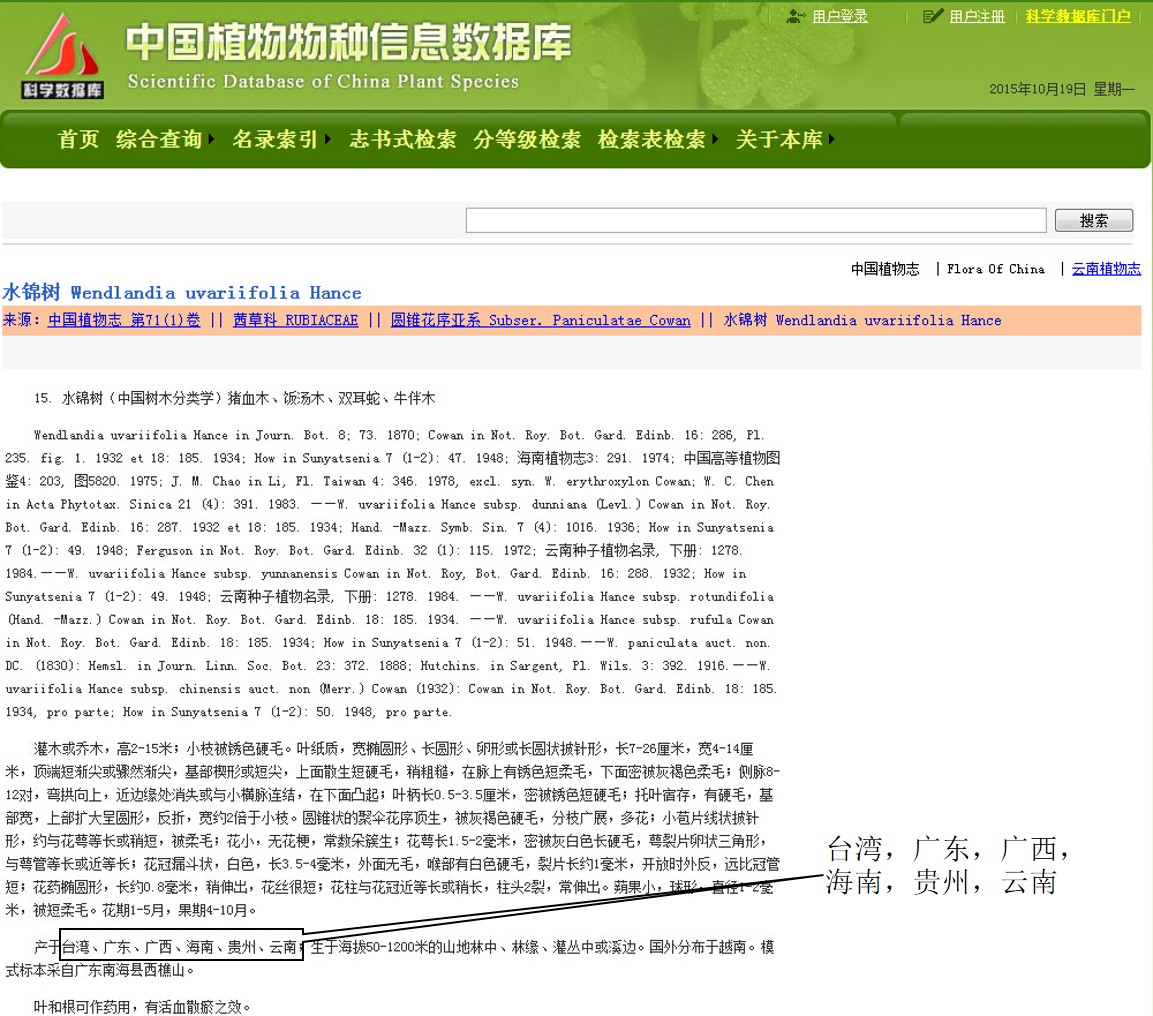
Figure 2. Province-level data for Wendlandia uvariifolia Hance described in ‘Scientific Database of China Plant Species’.
Step 1.2 County-level distribution:
Data collection from ‘Flora of Guangdong’ (Fig. 3), ‘Exchange Platform of Guangxi Plant Information’, ‘Flora of Guizhou’, ‘Flora of Hainan’, ‘Plants of Taiwan’ and ‘Flora of Yunnan’. We obtained county-level distribution as shown below:
Guangdong (广东省) : Gaoyao (高要市), Xinyi (信宜市), Qingyuan (清远市), Guangzhou (广州市), Boluo (博罗县), Jiangmen (江门市), Xinxing (新兴县), Huaiji (怀集县), Fengkai (封开县), Nanhai (南海县), Yunfu (云浮市), Shunde (顺德市), and Zengcheng (增城市)
Guangxi (广西壮族自治区) : Whole region
Guizhou (贵州省) : Anlong (安龙县), Ceheng (册亨县), Wangmo (望谟县), and Luodian (罗甸县)
Hainan (海南省): Dongfang (东方市), Ledong (乐东黎族自治县), Sanya (三亚市), Danzhou (儋州市), Changjiang (昌江黎族自治县), Dingan (定安县), Lingshui (陵水黎族自治县), Qiongshan (琼山区、县), Baisha (白沙黎族自治县), and Baoting (保亭黎族苗族自治县)
Taiwan (台湾省): Whole province
Yunnan (云南省): Yanshan (砚山县), Maguan (马关县), Malipo (麻栗坡县), Xichou (西畴县), Funing (富宁县),Mengzi (蒙自县), Pingbian (屏边苗族自治县), Hekou (河口瑶族自治县), Simao (思茅市), and Mengla (勐腊县)
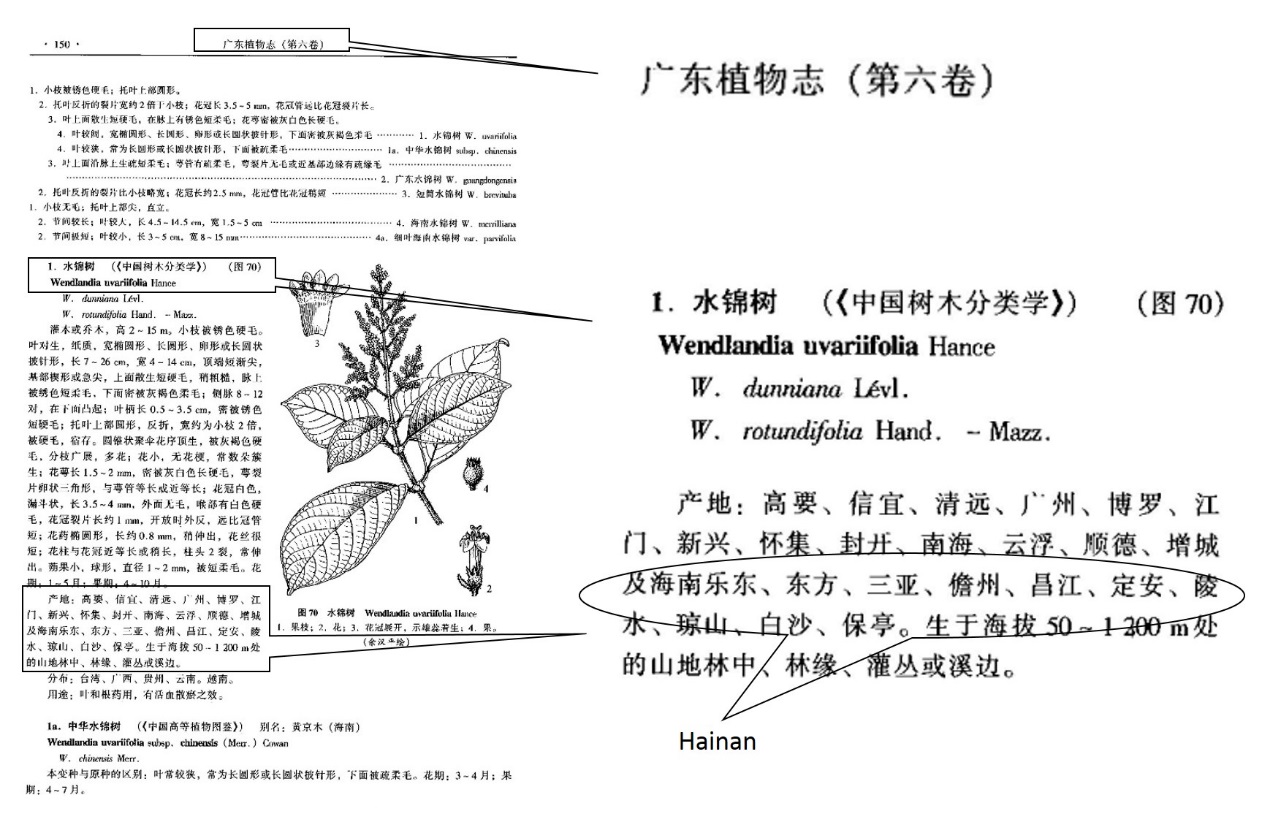
Figure 3. County-level data for Wendlandia uvariifolia Hance described in ‘Flora of Guangdong’
Step 2: Map edition
ArcGIS9.3 (Environmental Systems Research Institute, Inc.) is used for editing the maps based on the China’s latest administrative divisions from the data collected above.
Finally, the county-level distribution map of Wendlandia uvariifolia Hance is constructed, as shown in Fig. 4.
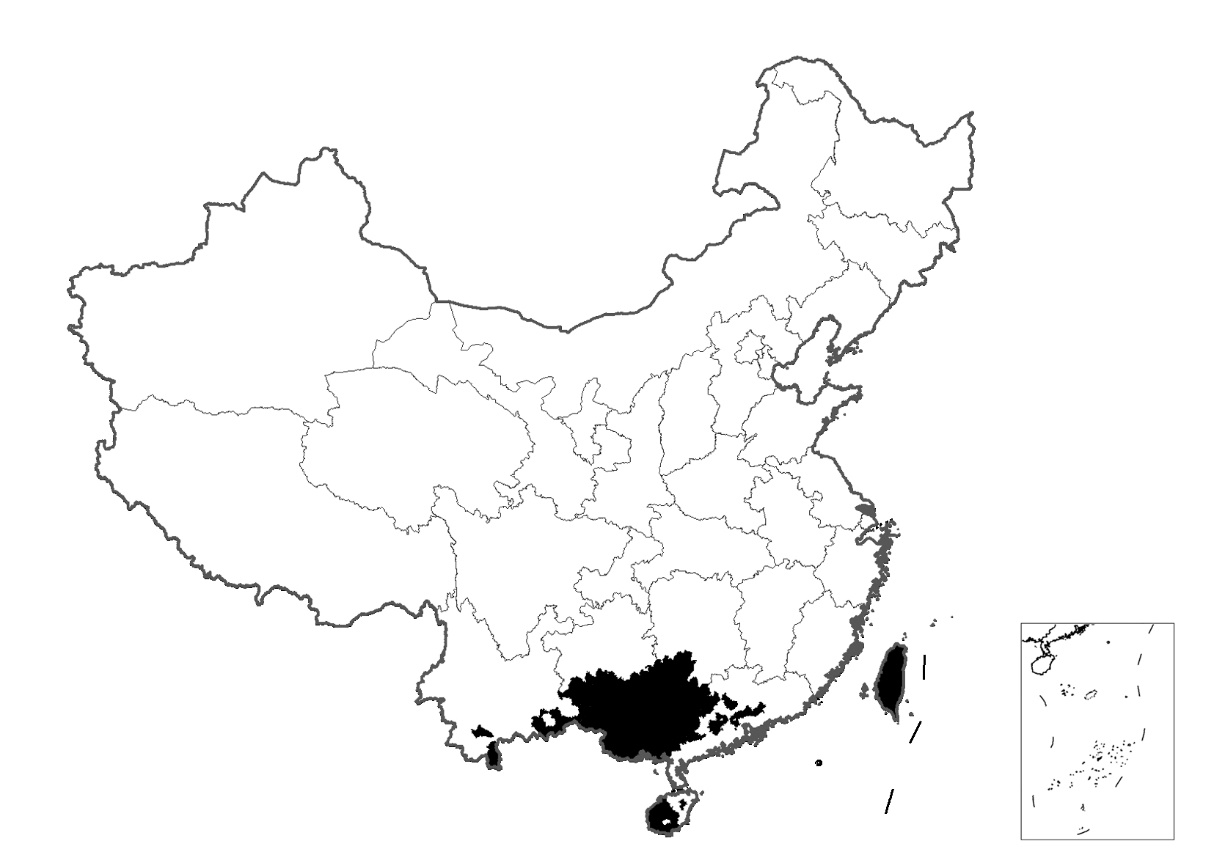
Figure 4. County-level distribution map constructed for Wendlandia uvariifolia Hance.
Notes
Please note that our data is based on distribution of provincial floras (see references), and much of this information was published for more than ten years old. Distribution of plant species may have changed in recent years due to the fast development and urbanization.
1) Fang, J.Y., Wang, Z.H., Tang, R.Z., 2010. Atlas of woody plants in China: distribution and climate (中国木本植物分布图集). Higher Education Press, Beijing, volume: 1–3. (In Chinese and English).
2) Fu, L.G., 2012. Higher Plants of China (中国高等植物). Qingdao Press, Qingdao, volume: 1–14. (In Chinese)
3) Institute of Botany, Chinese Academy of Sciences (CAS). Plant Science Data Center (植物科学数据中心). URL: https://www.plantplus.cn/cn. (In Chinese) (accessed: 10th April, 2022).
4) Kunming Institute of Botany, CAS. Scientific database of China plant species (中国植物物种信息数据库). URL: http://db.kib.ac.cn/CNFlora/HierarchicalSearch.aspx. (In Chinese) (accessed: 10th April, 2022).
5) Wu, Z.Y., Peter, H.R., 2013. Flora of China. URL: http://foc.iplant.cn/. (accessed: 10th April, 2022).
6) Editorial Committee of Flora of Anhui, 1982–2004. Flora of Anhui (安徽植物志). China Prospect Publishing House, Beijing, volume 1–5. (In Chinese)
7) Editorial Committee of Flora of Fujian, 1982–1993. Flora of Fujian (福建植物志). Fujian Science & Technology Publishing House, Fuzhou, volume 1–6. (In Chinese)
8) Editorial Committee of Flora of Gansu, 2005. Flora of Gansu (甘肃植物志). Gansu Science & Technology Publishing House, Lanzhou, volume 2. (In Chinese)
9) Northwest Institute of Botany, CAS, 1976. Flora Tsinlingensis (秦岭植物志) . Science Press, Beijing, volume 1. (In Chinese)
10) South China Botanical Garden, CAS, 1987–2011. Flora of Guangdong (广东植物志). Guangdong Science & Technology Press, volume 1–10. (In Chinese)
11) Gunagxi Institute of Botany, CAS, 1991–2011. Flora of Guangxi (广西植物志). Guangxi Science & Technology Publishing House, volume 1–3. (In Chinese)
12) Gunagxi Institute of Botany, CAS. Exchange Platform of Guangxi Plant Information (广西植物资源信息共享平台). URL: http://flora.gxib.cn/. Last access: 17th February, 2017. (In Chinese)
13) Guangxi Academy of Forestry, 2012–2015. Sylva Guangxigensis (广西树木志). China Forestry Publishing House, Beijing, volume 1–3. (In Chinese)
14) Editorial Committee of Flora of Guizhou, 1982–2004. Flora of Guizhou (贵州植物志). Guizhou People’s Publishing House, Guiyang, volume 1–10. (In Chinese)
15) Guangdong Institute of Botany, CAS, 1965–1977. Flora of Hainan (海南植物志). Science Press, Beijing, volume 1–4. (In Chinese)
16) Editorial Committee of Flora of Hebei. Flora of Hebei (河北植物志). Heibei Science & Technology Publishing House, volume 1–4. (In Chinese)
17) Sun, L.Y., Ren, X.W., 1997. 孙立元, 任宪威. Woody Flora of Hebei (河北树木志). China Forestry Publishing House, Beijing. (In Chinese)
18) Zhou, Y.L., 1985–2003. Flora of Heilongjiang (黑龙江植物志). Northeast Forestry University Publishing House, Harbin, volume 1, 4–11. (In Chinese)
19) Zhou, Y.L., Nie, S.Q., Yuan, X.Y., Yang, F.J., 2003. Flora Heilongjiang (黑龙江植物志资源志). Northeast Forestry University Publishing House, Harbin. (In Chinese)
20) Ding, B.Z., Wang, S.Y, 1981–1998. Flora of Henan (河南植物志). Henan Science & Technology Publishing House, Zhengzhou, volume 1–3. (In Chinese)
21) Wuhan Botanical Garden, CAS, 2001–2002. Flora of Hubei (湖北植物志). Hubei Science & Technology Publishing House, Wuhan, volume 1–4. (In Chinese)
22) Editorial Committee of Flora of Hunan, 2004–2010. Flora of Hunan (湖南植物志). Hunan Science & Technology Publishing House, Changsha, volume 1–3. (In Chinese)
23) Qi, C.J., Lin, Q.Z., 2000. Woody Flora of Hunan (湖南树木志). Hunan Science & Technology Publishing House, Changsha. (In Chinese)
24) Jiangsu Institute of Botany, CAS, 1977–1982. Flora of Jiangsu (江苏植物志). Jiangsu People’s Publishing House, Nanjing, volume 1–2. (In Chinese)
25) Liu, Q.X., 2015. Flora of Jiangsu, new version (江苏植物志, 新版). Phoenix Science Press, Nanjing, volume 2. (In Chinese)
26) Jiangxi branch of CAS, 1960. Flora of Jiangxi (江西植物志). Jiangxi People’s Publishing House, Nanchang. (In Chinese)
27) Editorial Committee of Flora of Jiangxi, 1993–2014. Flora of Jiangxi, new version (江西植物志新版). China Science & Technology Press, Beijing, volume 1–3. (In Chinese)
28) Zhao, Y.T., 2009. Iconographia Plantarum Lignosarum Jilinica (吉林树木图志). China Forestry Publishing House, Beijing. (In Chinese)
29) Li, S.X., 1988–1991. Flora of Liaoning (辽宁植物志). Liaoning Science & Technology Publishing House, Shenyang, volume 1–2. (In Chinese)
30) Editorial Committee of Flora of Nei Mongol, 1977–1985. Flora of Nei Mongol (内蒙古植物志). Nei Mongol People’s Publishing House, Hohhot, volume 1–8. (In Chinese)
31) Ma, D.Z., Hu, F.X., Liu, H.L., 1986–1988. Flora of Ningxia (宁夏植物志). Ningxia People’s Publishing House, Yinchuan, volume 1–2. (In Chinese)
32) Northwest Institute of Plateau Biology, CAS, 1996–1999. Flora of Qinghai (青海植物志). Qinghai People’s Publishing House, Xining, volume 1–4. (In Chinese)
33) Niu, C.S., 1990. Dendrologia Schensiensis (陕西树木志). China Forestry Publishing House, Beijing. (In Chinese)
34) Chen, H.B., Zheng, Y.J., Li, F.Z., 1990–1997. Flora of Shandong (山东植物志). Qingdao Publishing House, Qingdao, volume 1–2. (In Chinese)
35) Editorial Committee of Woody Flora of Shandong, 1984. Woody Flora of Shandong (山东树木志). Shandong Science & Technology Publishing House, Jinan. (In Chinese)
36) Liu, T.W. et al., 1992–2004. Flora of Shaxi (山西植物志). China Science & Technology Press, Beijing, volume 1–5. (In Chinese)
37) Editorial Committee of Flora of Sichuan. Flora of Sichuan (四川植物志). Sichuan Science & Technology Publishing House, Chengdu, volume 1–17, 21. (In Chinese)
38) Yang, Z.Q., 1997. Tree distribution in Sichuan (四川树木分布). Guizhou Science & Technology Publishing House, Guiyang. (In Chinese)
39) Lyu, Y.J., L, F.Y., Ou, C.X., 1983. Woody Flora of Taiwan (台湾树木志). College of Agriculture, National Chung Hsing University, Taichung. (In Chinese)
40) Institute of Ecology and Evolutionary Biology, National Taiwan University. Plants of Taiwan (台湾植物资讯整合查询系统). URL: https://tai2.ntu.edu.tw/. (In Chinese & English) (accessed 10th April, 2022).
41) Editorial Committee of Flora of Xinjiang, 1992–2004. Flora of Xinjiang (新疆植物志). Xinjiang Science & Technology Medical Publishing House, Urumqi, volume 1–2, 4–6. (In Chinese)
42) Integrated Scientific Expedition to Qinghai-Tibet Plateau, CAS, 1983–1987. Flora of Xizang (西藏植物志). Science Press, Beijing, volume 1–5. (In Chinese)
43) Kunming Institute of Botany, CAS, 1977–2005. Flora of Yunnan (云南植物志). Science Press, Beijing, volume 1–19. (In Chinese)
44) Editorial Committee of Flora of Zhejiang, 1989–1993. Flora of Zhejiang (浙江植物志). Zhejiang Science & Technology Publishing House, Hangzhou, volume 1–7.
The first publication of wood anatomy in China can be traced back to “Anatomical Characters and Identification of Formosan Woods” by Ryozo Kanehira in 1921 (1, Fig. 5a). The book consists of five chapters, the main one describing the anatomy of Formosan wood according to Bentham and Hooker's classification. The number of species investigated is 386, comprising of 226 genera and 66 families with microscopic photographs from 46 softwood and 290 hardwood species, which cover quite a number of tree species growing in Taiwan. About 10 years later, articles dealing with Chinese softwood and imported wood were published by Yao Tang (唐耀) in mainland China (2–4). Looking at the early historical trends in wood anatomy in mainland China, the most comprehensive reference is Tang’s “Chinese Wood Science, 中國木材學”, published in 1936 (5, Fig. 5b). This book contains both general and specific sections, the former focusing on wood anatomy and wood quality, and the latter on the commercial timber and systematic classification of Chinese wood. The author describes the anatomical characteristics of wood from 8 families, 24 genera and 48 species of gymnosperms, and from 54 families, 300 genera and 408 species of angiosperms, attached with 376 micrographs. Based on these contributions, Tang (1905–1998), may be considered a pioneer of wood anatomy in China. In 1938, he completed his doctoral thesis, entitled “Systematic Anatomy of the Woods of the Hamamelidaceae《金缕梅科木材系统解剖的研究》”, and received a PhD degree from Yale University, USA. Another scholar, Chen-Lee Lee (1918–2009), was a distinguished Chinese structural botanist, who joined the University of Illinois at Urbana-Champaign (UIUC) in 1947, received a PhD degree in 1953 with the thesis, entitled “Reproductive morphology of Ginkgo biloba” and returned to Peking University as a professor in 1957. He was also an expert in wood anatomy and have contributed to the early progress of wood anatomy in China. Comparative anatomical studies of vessels in Magnoliaceae was published by Lee and his disciple, Wu in 1988 (6).
Soon after the discovery of the living tree of Metasequoia glyptostroboides in Hubei (at that time, Sichuan province) in 1946, anatomical studies of this species were published by Li in 1948 (7). In the same year, properties of the living fossil wood were studied by Liang et al. (8). In the 1950s and 1960s, articles and books on wood anatomy were published for the uses of domestic timbers (9–12, Fig. 5c). Publications on wood anatomical research, focusing on tropical and subtropical wood in China, was also published in the early 1970s and 1980s (13–15, Fig. 5d, 5e). Around this time, another valuable books, “Wood science, 木材学” was published by Cheng (16, Fig. 6a). This book describes progress in wood science from the 1960s to the early 1980s, in China and is divided into four parts - wood structure, chemical properties of wood, physical properties of wood, and mechanical properties. The section on “Wood structure” has five chapters - tree growth and structure, plant cell wall, wood identification, wood grain, and wood structure and utilization. The section on “Chemical properties of wood” has four chapters - chemical composition of cell walls, extractives, chemical properties of wood and bark. The section on “Physical properties of wood” has six chapters - wood and moisture, wood density, thermo-chemistry of wood, electrical property of wood, acoustic property of wood, and air permeability of wood. The section on “Mechanical properties of wood” has four chapters - basic concepts, compressive strength, tensile strength, and shear strength of wood. As seen from the contents in this book, it covers almost all field of wood science, with the first section on “Wood structure” focusing only on the description of wood anatomy.
 |
 |
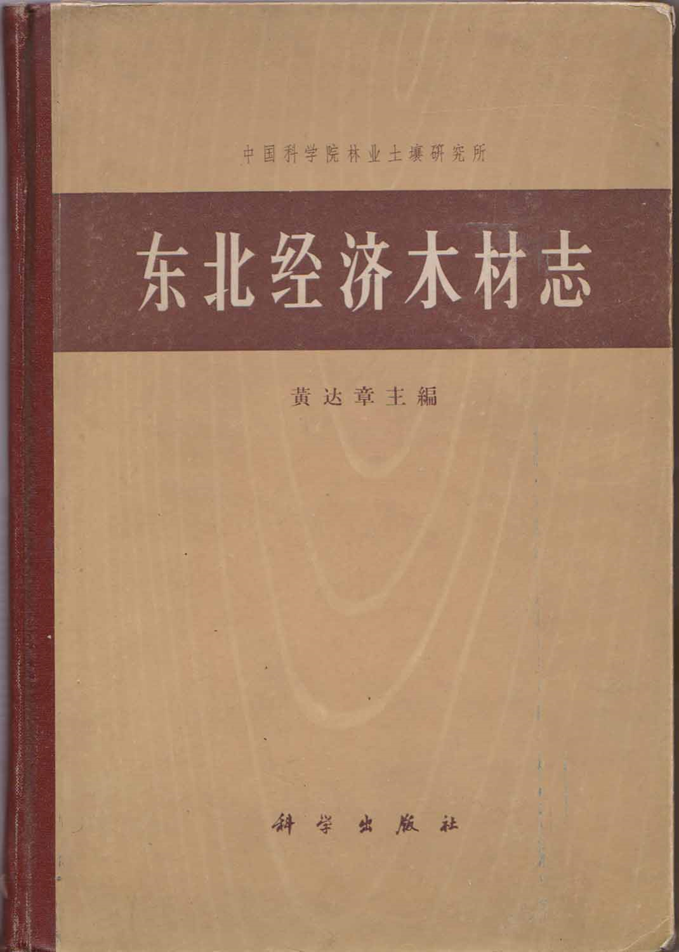 |
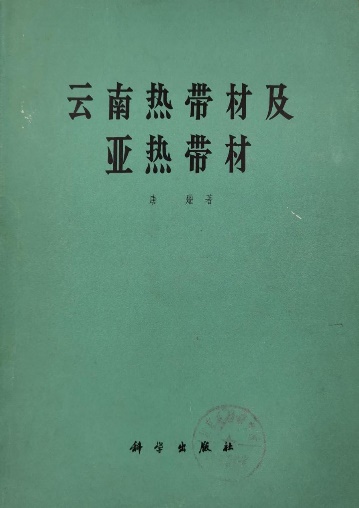 |
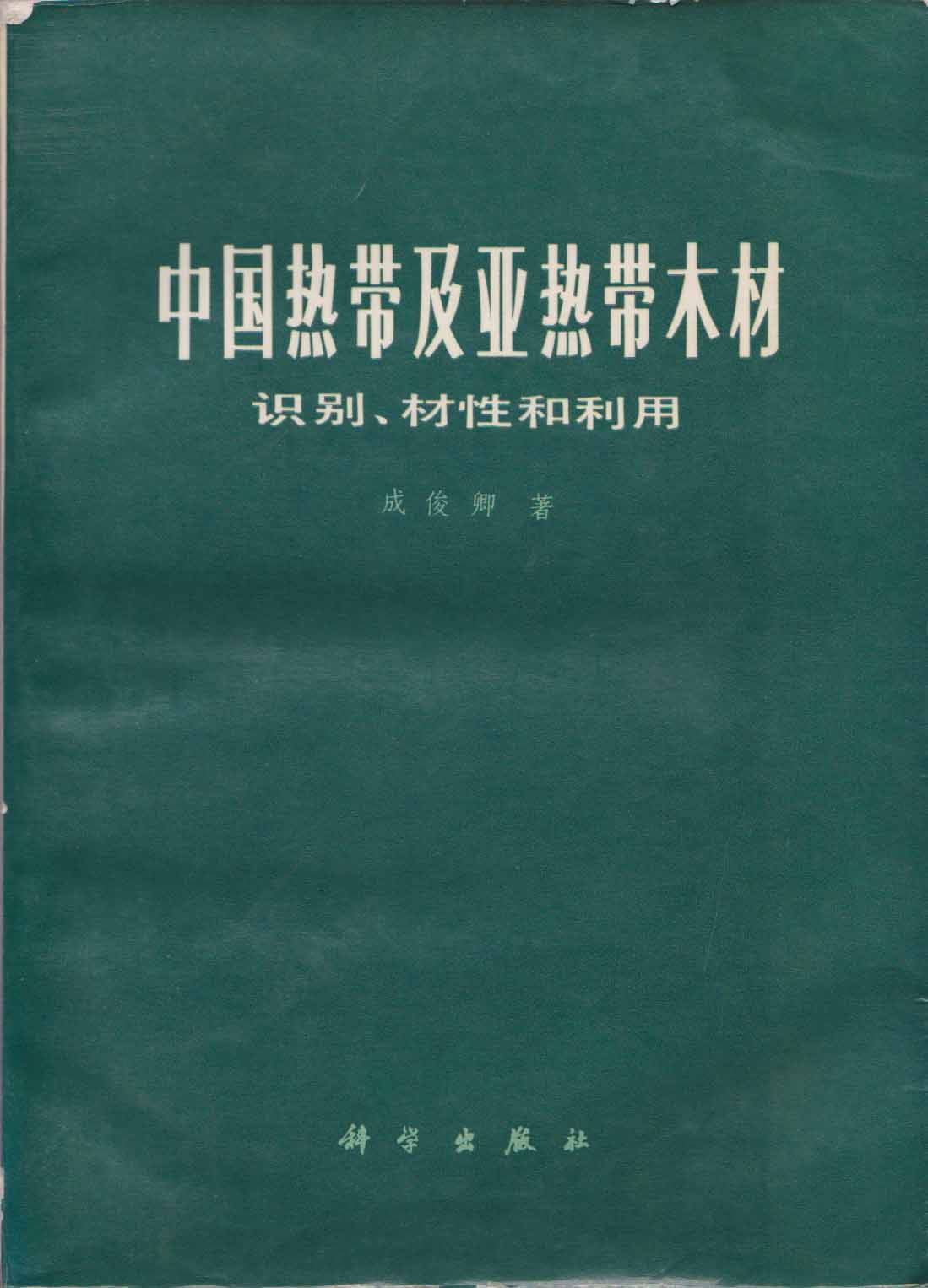 |
Figure 5a (1). |
Figure 5b (5). |
Figure 5c (12). |
Figure 5d (13). |
Figure 5d (14). |
The study of wood anatomy in China advanced rapidly in the 1980s to the 1990s, and many of these studies focused on wood identification (17–27), in parallel with the increasing demand for domestic and imported timbers. Of particular interest is the fact that many of these studies deal with region-specific trees in different provinces of China (18–22, 24, 26, 27, Fig. 6b, 6c, 6d, 7a, 7b and 7c).
In the 80s and 90s of the last century a series of six papers, “Wood Anatomy of Trees and Shrubs from China were published in the IAWA Bulletin and IAWA Journal, containing detailed anatomical descriptions, identification keys, and micrographs of Oleaceae (28), Theaceae (29), Rosaceae (30), Ulmaceae (31), Anacardiaceae (33), Magnoliaceae (34).
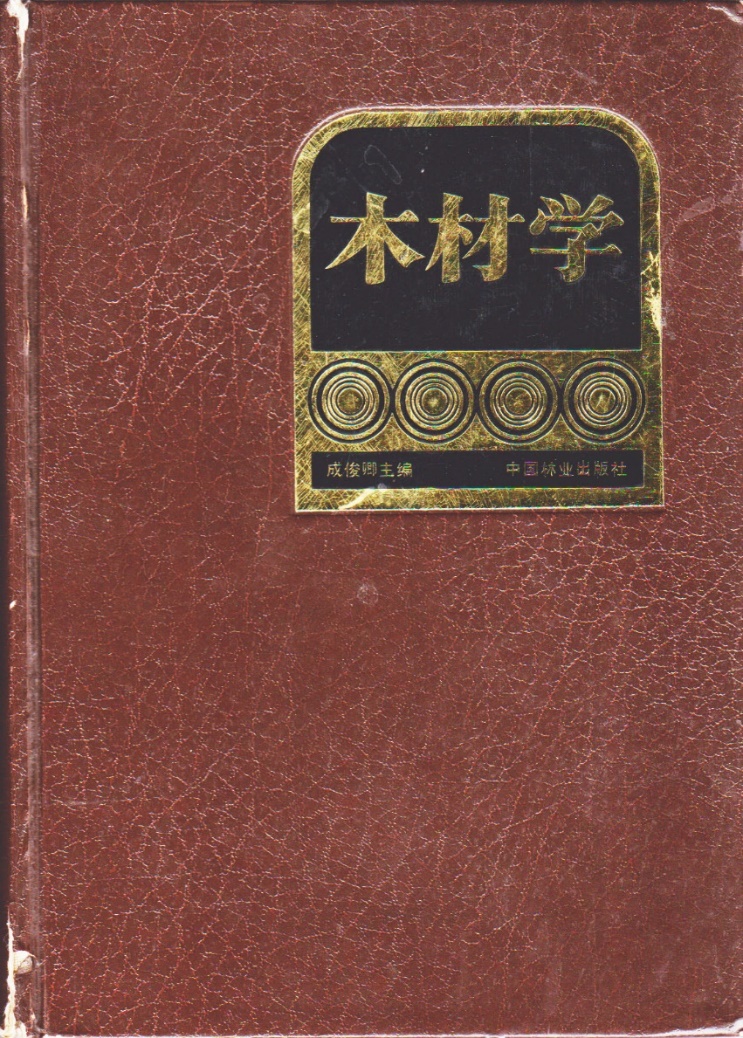 |
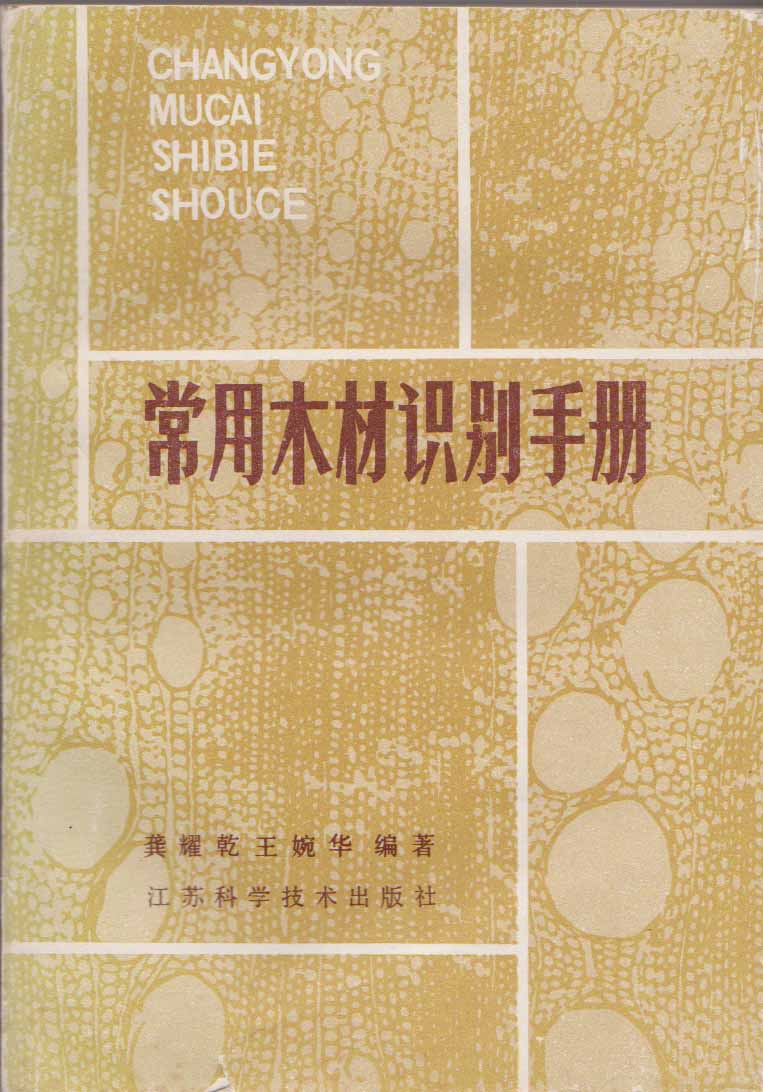 |
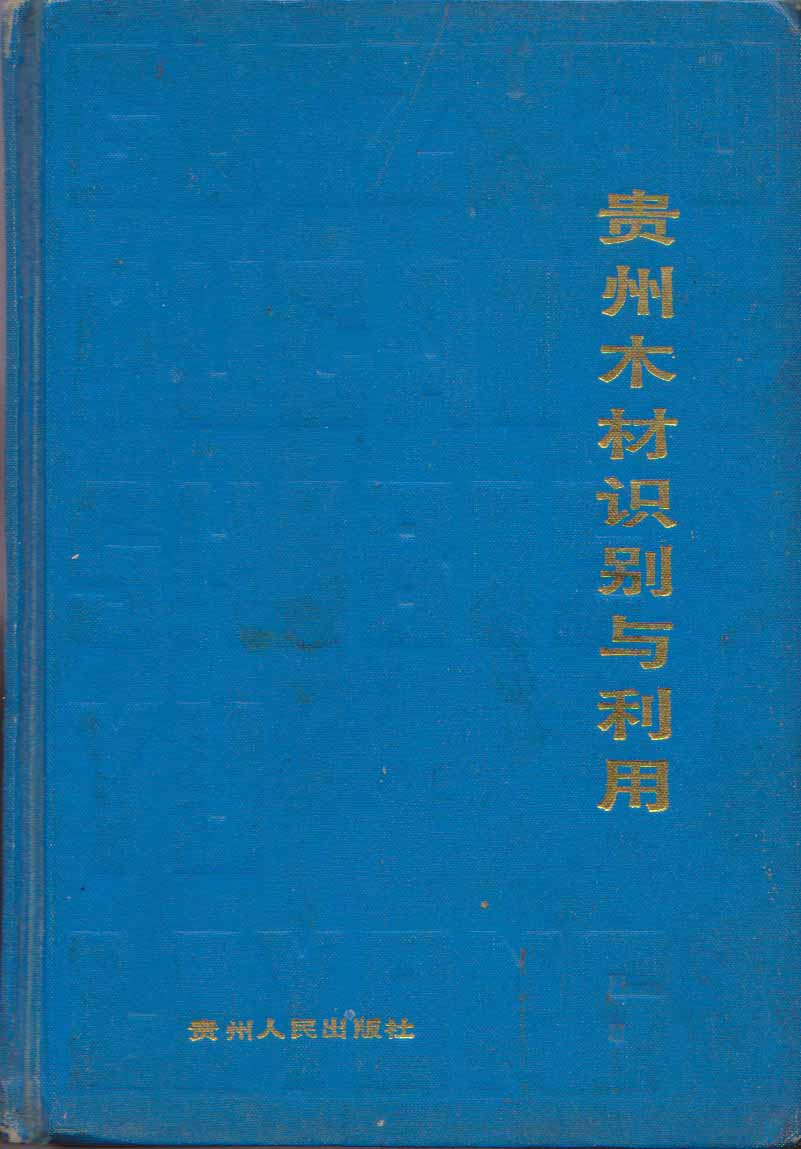 |
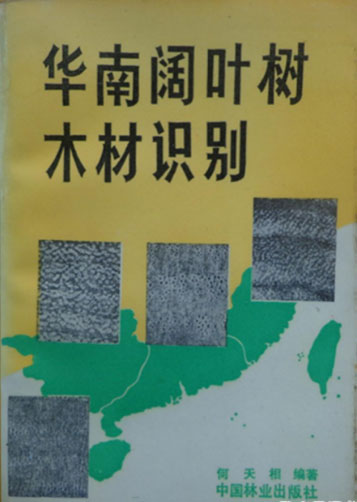 |
Figure 6a (16). |
Figure 6b (20). |
Figure 6c (21). |
Figure 6d (22). |
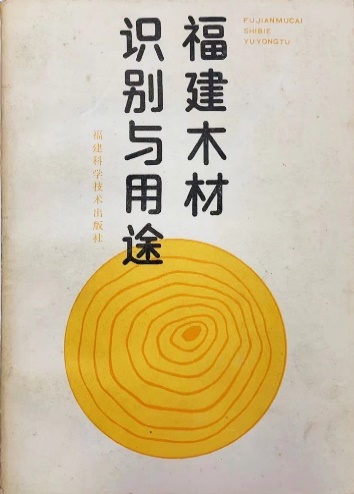 |
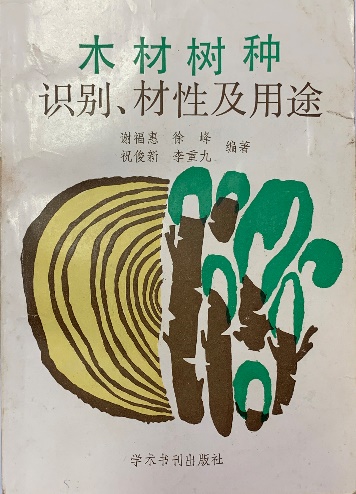 |
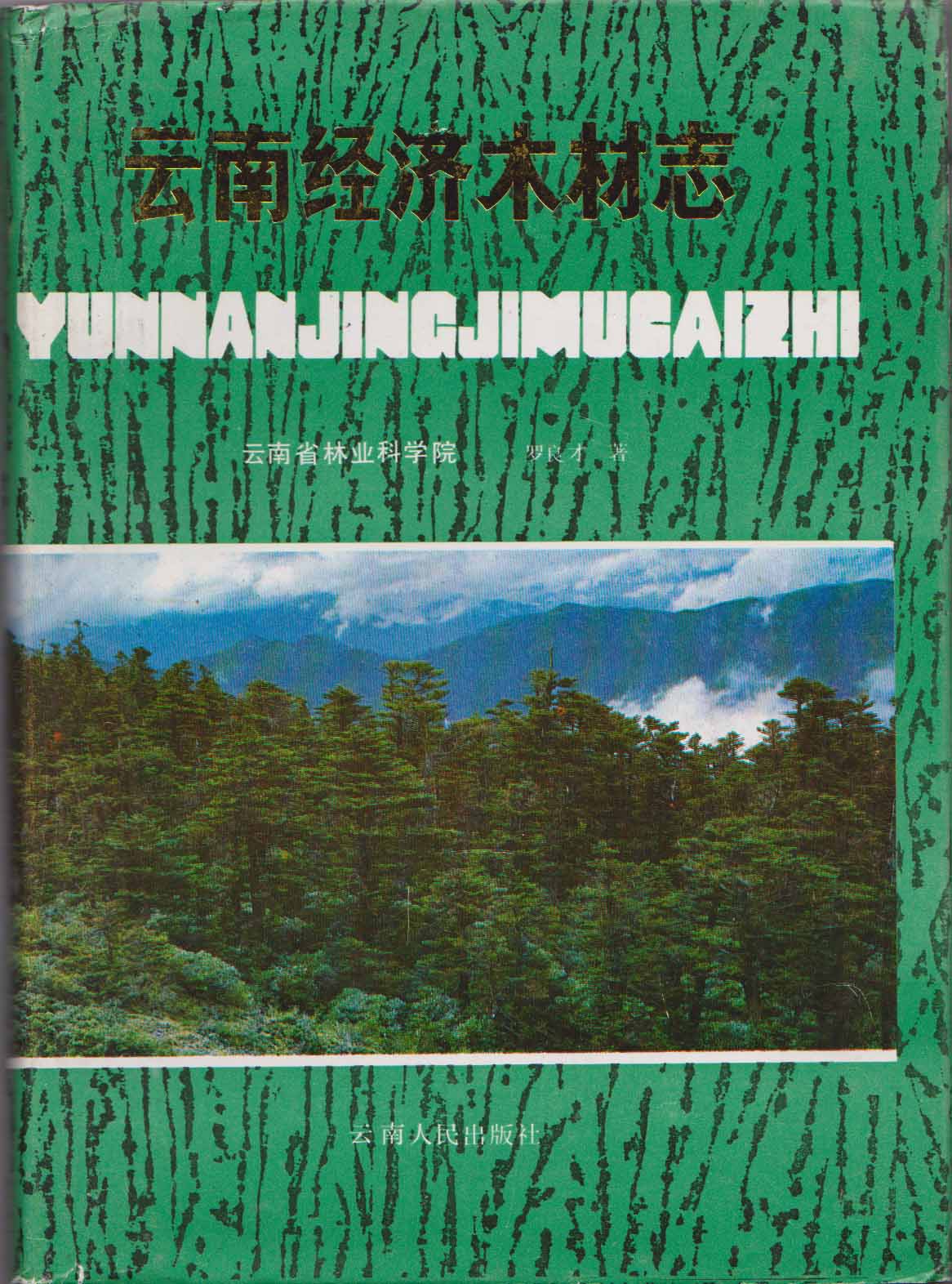 |
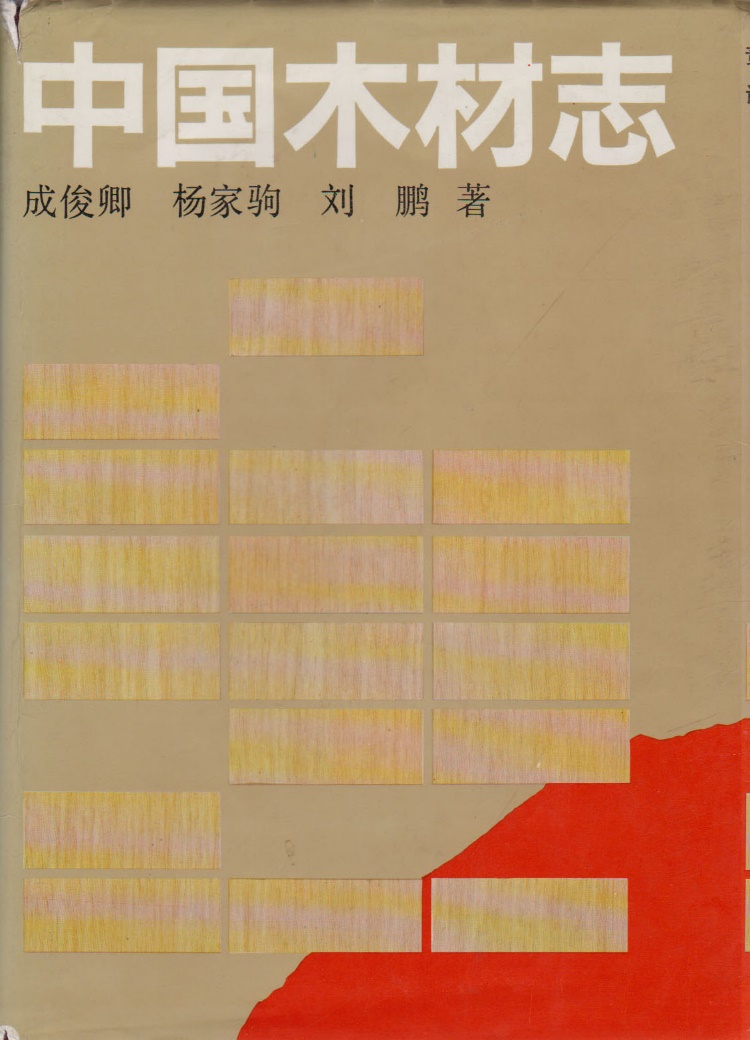 |
Figure 7a (24). |
Figure 7b (26). |
Figure 7c (27). |
Figure 7d (32). |
More recently, Cheng, Yang and Liu published a book entitled, “Wood Atlas in China, 中国木材志” in 1992 (32, Fig. 7d). This book includes the following contents.
Preface
Wood Anatomical features and uses (pp.1–700)
I Gymnospermae
1–7 sections (Seven families)
II Angiospermae
8–94 sections (87 families)
Principal uses of wood (pp. 701–752)
Plates of photomicrographs (196 Plates, 392 species)
As can be seen from the contents, this book exclusively describes the anatomical characteristics of Chinese wood attached with micrographs. It includes anatomical descriptions of 36 softwood species and 315 hardwood species. It also includes micrographs, each with the three different planes, cross, radial and tangential sections of wood specimens from 52 softwood and 240 hardwood species. This book provides a detailed description of the anatomy of various species of Chinese wood. We believe this book is an excellent source for researchers interested in wood anatomy and wood identification of Chinese trees. Unfortunately, this book is sold out and not available anymore.
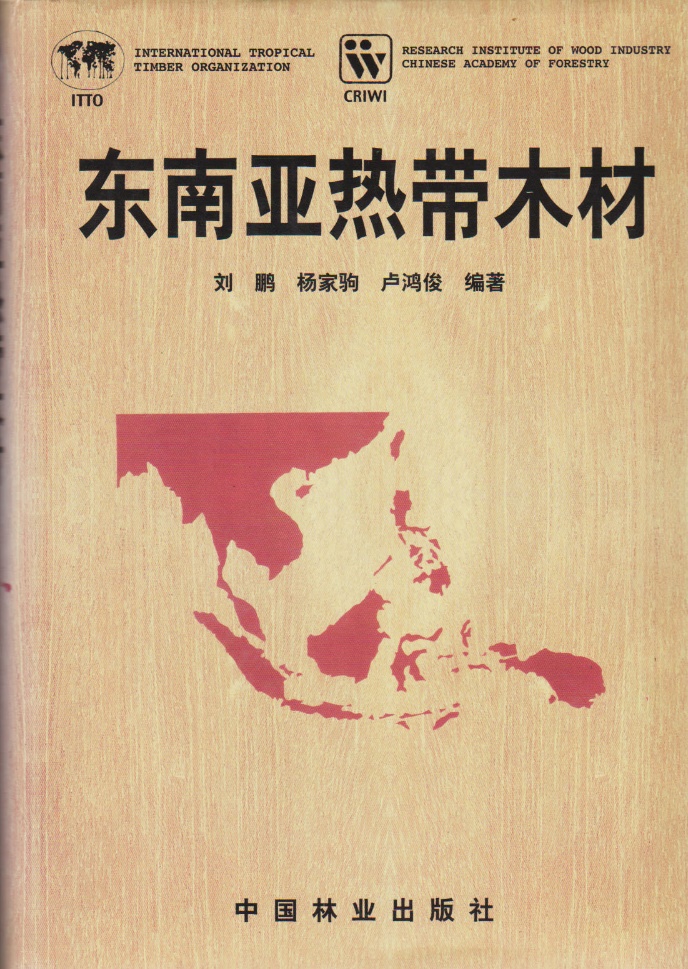 |
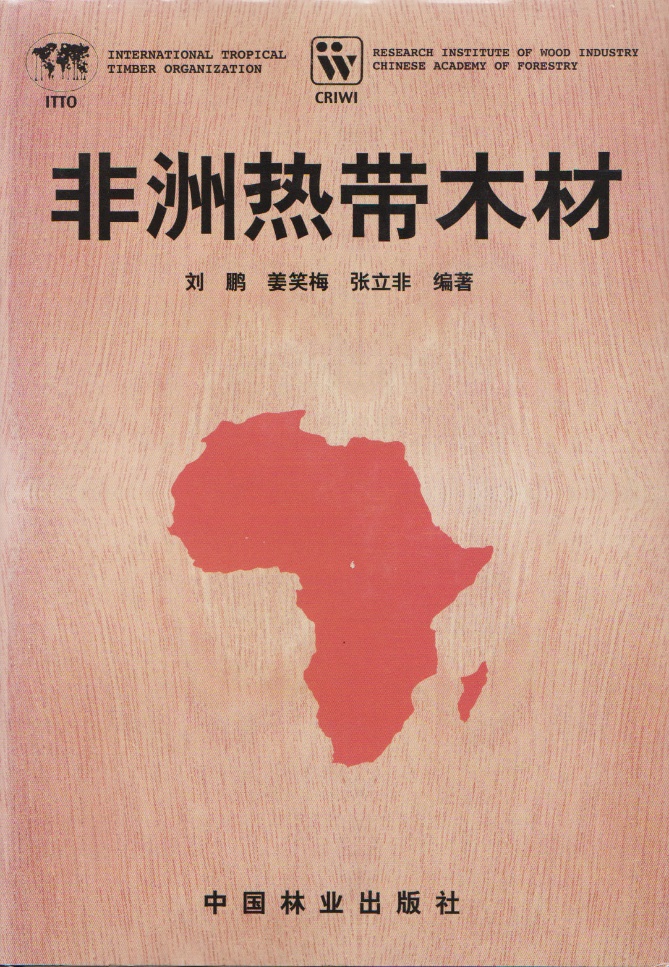 |
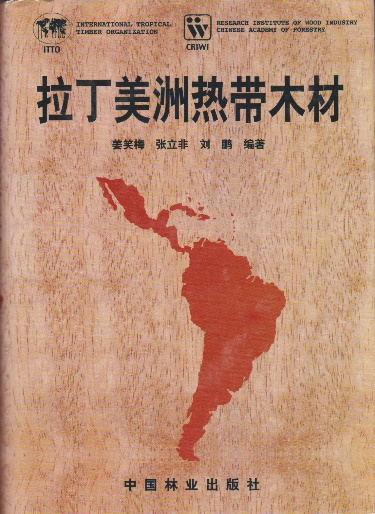 |


 |
Figure 8a (35). |
Figure 8b (37). |
Figure 8c (38). |
Figure 8d (39). |
In the 1990s, the researchers of the Research Institute of Wood Industry, Chinese Academy of Forestry, was actively involved in sharing information on wood anatomy of Southeast Asian, African and Latin American trees (35, 37, 38, Fig.8a, 8b, 8c). In 1995, wood atlas of local tree species in Shanxi was published by Ke et al. (36). In 1999, wood anatomical illustrations from Yunnan were published in three volumes, with not only micrographs, but also colored images of leaves and branches, and real veneers attached (39, Fig. 8d). A few years later, microscopic features and photomicrographs showing properties of wood from the Northeast district in China were published as a part of a handbook by Liu et al. (40). Zhou and Jiang published an informative book, the “Wood anatomy and ultrastructure of gymnospermous woods in China” in 1994 (41, Fig. 9a). In 1995, Professor Shu Ming Wu, of Nankai University, organized the first ‘International Wood Anatomical Symposium’ supported by IAWA in China, and published the short reports of the presenters under the title of “Wood Research 1995” (42). With the increase of wood anatomy researchers in China, Professor Biao Pan, of Nanjing Forestry University, Nanjing China, with the support of IAWA and Jiangsu Provincial People’s Government organized the 8th Pacific Regional Wood Anatomy Conference in Nanjing in 2013, following this conference, the regional organization of IAWA-China Group was formed, which continues to hold its annual meeting every year.
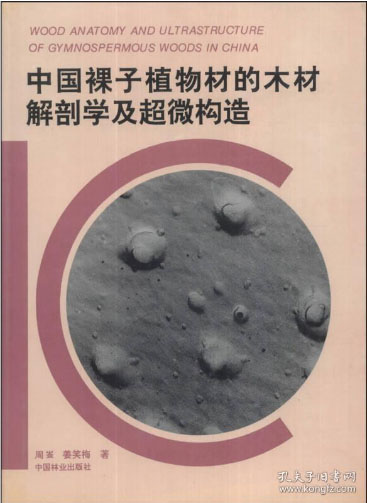 |
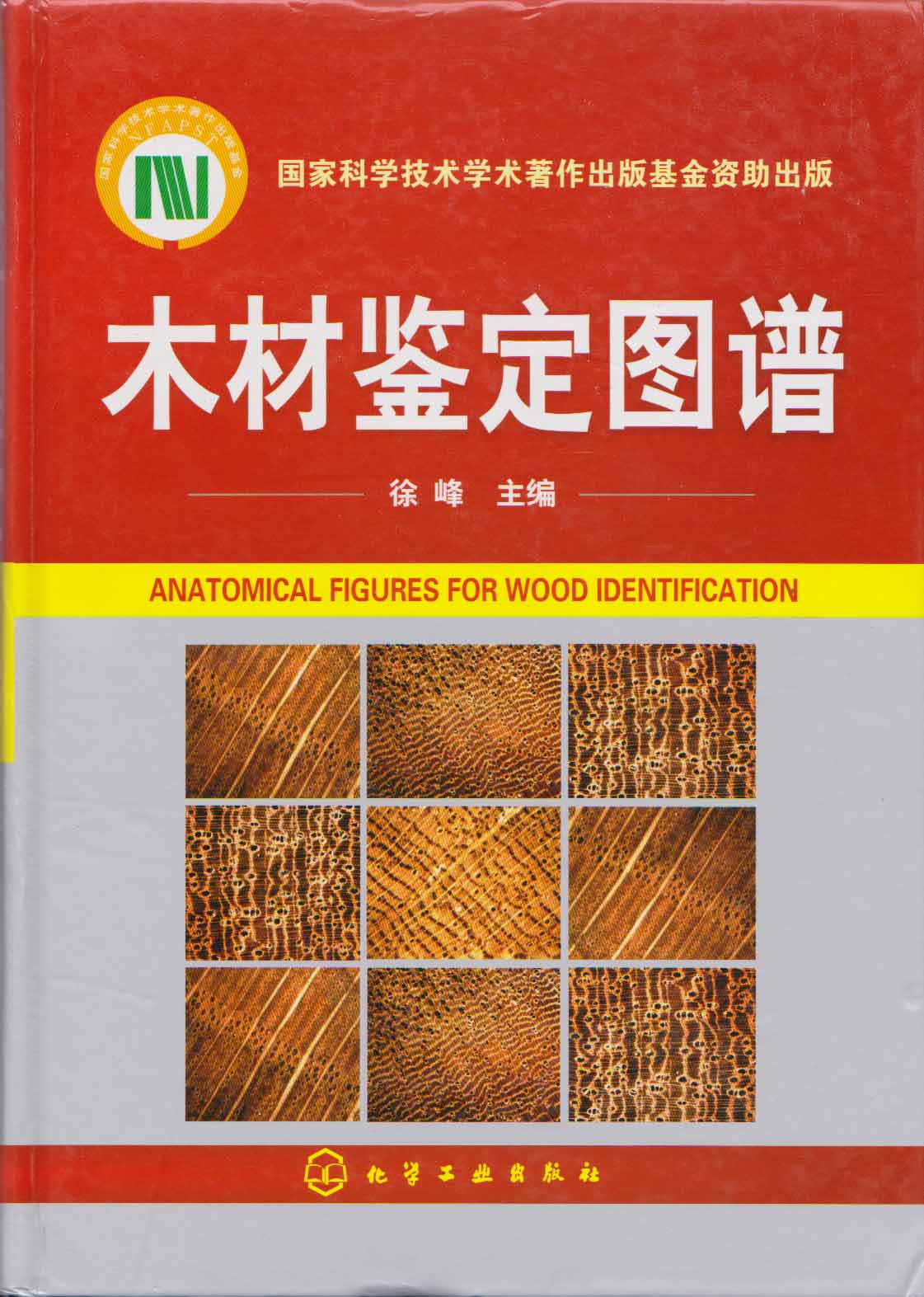 |
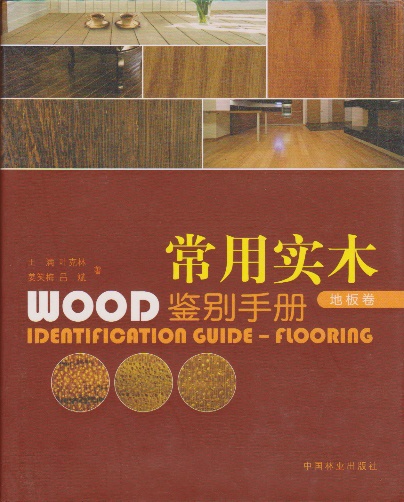 |
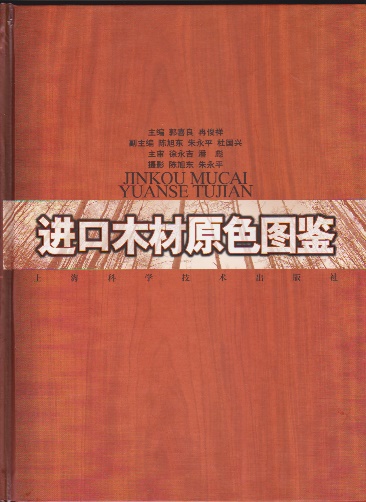 |
Figure 9a (41). |
Figure 9b (45). |
Figure 9c (46). |
Figure 9d (47). |
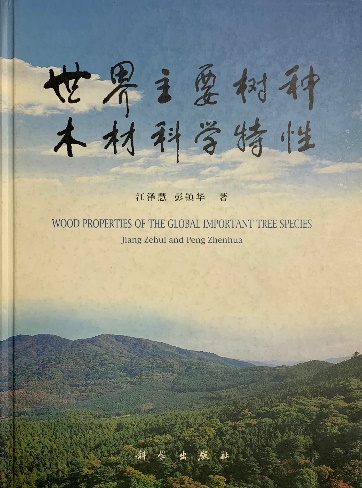 |
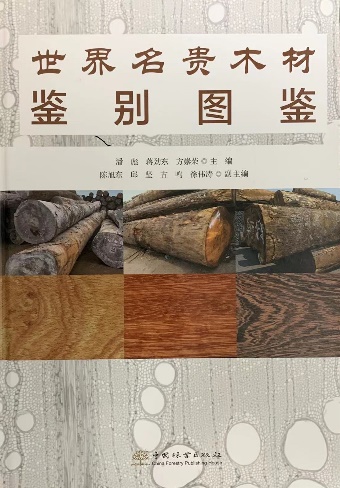 |
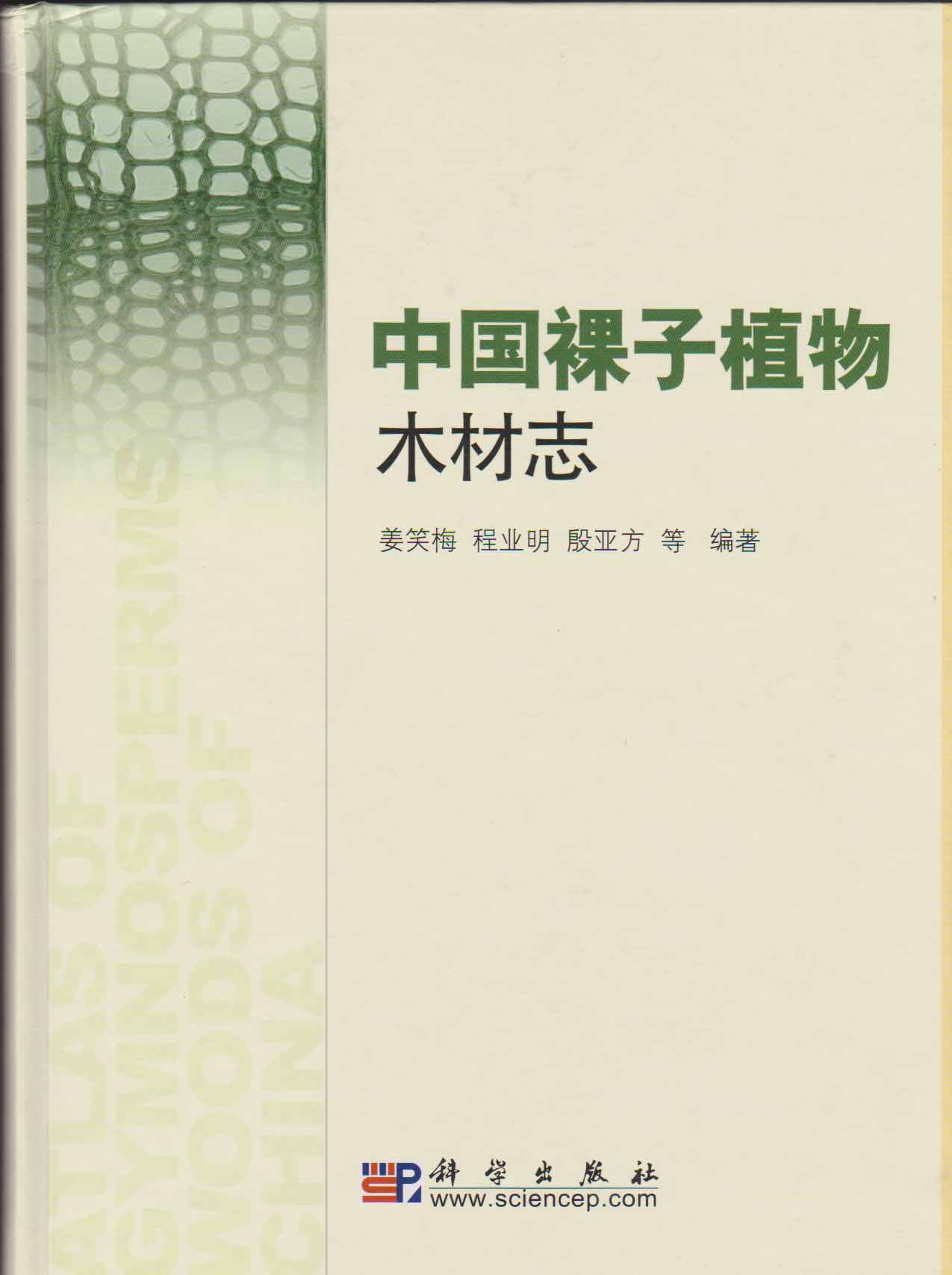 |
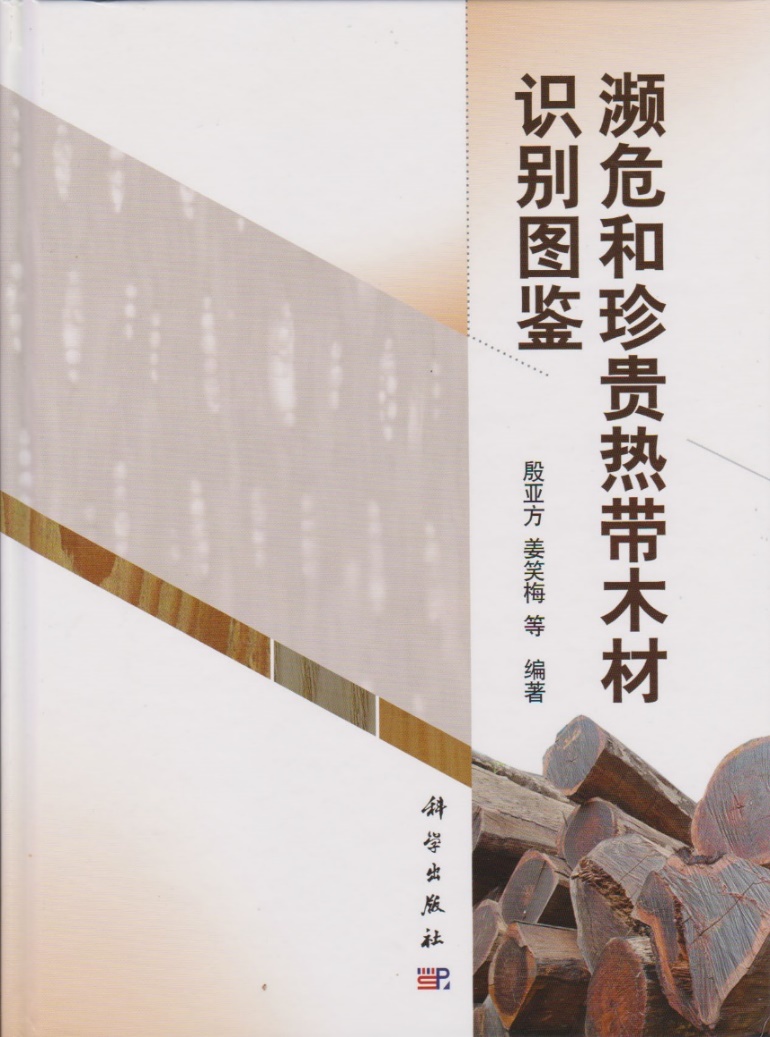 |
Figure 10a (48). |
Figure 10b (49). |
Figure 10c (50). |
Figure 10d (51). |
With increasing demand for traditional furniture made of rosewood (“Hongmu” in Chinese), wood scientists are often requested for wood identification from furniture companies these days. “Rosewood” furniture is not only traditional but also a major part of Chinese culture, occupying a large commercial sector in China. Consequently, there is a continuous demand for wood identification from “rosewood” and related wood species. Although our scrutiny for publications on rosewood is limited, a booklet titled, “National Standard of Rosewood (Hongmu) in China” (43) and its revised edition (44) is highly recommended. This booklet includes a list of “Rosewood” species, their origin, colored images of “Rosewood”, their anatomical features, and microscopic images. In response to the demand for rosewood furniture, Xu (2008) published a “Wood Identification Atlas”, containing woods introduced from many regions as substitutes for rosewood (45, Fig. 9b); a similar wood identification handbook was published in 2010 (46, Fig. 9c). In addition, with the increase in imported wood from abroad, a lot of information on wood anatomy of “rosewood (Hongmu)”, rare species, and introduced wood species has been published. A primary color Illustrated book of imported woods (47, Fig. 9d), a book on wood anatomical characteristics of globally important trees (48, Fig. 10a) and an illustrated book identifying the world’s valuable woods (49, Fig. 10b) were published, introducing a large number of commercial wood species, with information on distribution, local and scientific names, properties, uses and photographs of logs, boards, and lumbers. On the other hand, for basic information on wood anatomy of coniferous wood, Jiang et al. published an informative book, entitled “Atlas of gymnosperm woods of China” which covers many coniferous trees growing in China. This book contains high quality micrographs and tree distribution maps (50, Fig. 10c).
With increasing demands for the protection of CITES-listed trees, Yin and Jiang (2015) have published an illustrated reference book describing wood identification methods for these species, which can be recommended as a laboratory instruction manual for students and young researchers (51, Fig. 10d).
As described above, the demand for wood materials necessary for rosewood furniture, which supports China's unique furniture culture, is expected to continue for many years to come. On the other hand, as natural resources are depleted, other species of wood may gradually replace rosewood in the furniture business in the future. Needless to say, the use of wood must be promoted in harmony with the preservation of the global environment. With this in mind, it is hoped that a variety of studies will be conducted simultaneously to support efforts to protect trees and timbers regulated by CITES.
1) Kanehira, R. 1921. Anatomical characters and identification of Formosan woods, with critical remarks from the climatic point of view with 300 micrographs. Bureau of Productive Industries Government of Formosa Taihoku, 317 p., Plates L (50).
2) Tang Y. 1932. Anatomical studies and identification of Chinese softwoods, timber studies of Chinese trees Ⅱ. Fan Memorial Bulletin Vol. Ⅲ, No. 13, pp. 157-161.
3) Tang Y. 1933. Anatomical studies and identification of Chinese softwoods I. Bulletin of the Fan Memorial Institute of Biology volume Ⅳ, Number 7, Published by the Institute, Peiping, China. (唐耀, 中國裸子植物各属木材之研究, 静生生物調査所彙報 第四巻, 第七號, 北平静生生物調査所刊行, 1933).
4) Tang Y. 1934. Research on imported wood. Journal of Chinese Botany, volume I, Number 2, Botanical Society of China, 199 p. (唐耀, 輸入外材之研究, 载中国植物学杂志, 第一巻第二期, 中國植物學會刊行, 199 p, 1934).
5) Tang Y. 1936. Chinese wood science. The Commercial Press, 1-680, Plates No.1-37 (75 P.). (唐耀, 中國木材學, 商務印書館, 1-680, 図版第一~第三十七(75 p.), 1936).
6) Wu S., Lee C. 1988. Comparative anatomical studies on the vessel elements of eight genera in magnoliaceae (吴树明,李正理, 八属木兰科植物木材导管分子的比较解剖), Journal of Integrative Plant Biology, No.1 :33-39,127-128.
7) Li Y. H. 1948. Anatomical study of the wood of “shui-sha”, Metasequoia glyptostroboides newly discovered tree in Wan County. Hu et Cheng, Research Institute of Ministry of Agriculture and Forestry, Research Bulletin, Number 5. (李扬汉, 萬縣新發 現之水杉木材之解剖, 農林部中央林業実験所 研究專刊 第五號, 民國三十七, 1948).
8) Liang H., Chow K. Y. & Au C. N. 1948. Properties of A "Living- fossile" Wood, Forestry Institute, National Central University, Research Bulletin, Number 1. (梁希, 周光荣,区炽南,“活化石”木材的性质,国立中央大学森林学研究所研究报告,木材工艺学第一号,民国三十七年, 1948).
9) Liang S., Ou C., Zhang J. 1951. Research on domestic conifer wood, Section of Utilization. Forest faculty, Nanjing University. (梁世镇, 区炽南, 张景良, 国产针叶树材构造之研究, 南京大学森林系利用组, 1951).
10) Liang S. 1952. Microstructure of 175 wood species in western Sichuan province. Nanjing Forestry University. (梁世镇, 川西175种木材細微构造, 南京林业大學, P. 40 p., 1952).
11) Cheng J. Q. and Wei G. Y. 1957. Key notes and description of anatomical features of softwoods. Acta Botanica Sinica, Vol.4, No.1. (成俊卿, 卫广扬, 针叶树材解剖性质的记载要点和说明, 植物学报, 第四巻, 第一號, 1957).
12) Huang D. 1964. Atlas of commercial wood in northeast China. Science Press, 1-226 p., Plates I-LXXII (72). (黄达璋, 东北经济木材志, 科学出版社, 1-226 p, 図版I-LXXII (72), 1964).
13) Tang Y. 1973. Tropical and subtropical wood in Yunnan. Science Press, 296 p., Plates 1-79. (唐耀., 云南热带材及亚热带材, 科学出版社, 296 p,, 図版1-79, 1973).
14) Cheng J. 1980. Chinese tropical and subtropical wood. Science Press, 592 p. (成俊卿, 中国热带及亚热带木材, 科学出版社, 592 p., 1980).
15) Tang Y. 1982. Anatomical basis of wood. Yunnan Forestry Institute, 156 p. (唐耀, 木材解剖学基础, 云南林学院, 156 p., 1982).
16) Cheng J. 1985. Wood Science. China Forestry Publishing House. (成俊卿, 木材学, 中国林业出版社, 1985).
17) Cheng J., Cai, S. 1982. Wood identification and utilization. China Forestry Publishing House, 140 p., Plates 1-27. (成俊卿, 蔡少松, 木材识别与利用, 中国林业出版社, 140 p., 图版1-27, 1982).
18) Wang B. Q. 1983. Wood identification. Shanxi Science and Technology Press, 124 p. (汪秉全, 木材识别, 陕西科学技术出版社, 124 P., 1983).
19) Liu S. L., Fang W. B., Huang L. Y., et al. 1983. The structure and properties of Cathaya argyrophylla wood. Hunan Science and Technology Press, 94 p., Picture Plates 1-182. (刘松龄, 方文彬, 黄玲英等, 银杉木材构造和性质, 湖南科学技术出版社, 94 p., 图版1-182, 1983).
20) Gong Y., Wang, W. 1985. Identification manual of common wood. Jiangsu Science Press, 493 p., Plates 1-69. (龚耀乾,王婉华, 常用木材识别手册, 江蘇科学技术出版社, 493 p., 図版1-69, 1985).
21) Luo W., Wang B. 1985. Identification and utilization of Guizhou wood. Guizhou People’s Press 449 p., Picture Plates 1-34. (罗文吉, 王邦林, 贵州木材识别与利用, 贵州人民出版社, 449 p., 图版1-34, 1985).
22) He T. X.1985. Identification of south China hardwoods. China Forestry Publishing House, 389 p. (何天相, 华南阔叶树木材识别, 中国林业出版社, 389 p., 1985.
23) Wei G. 1988. Identification manual of southeast Asian wood. Anhui Science Press, 308 p., Plates 1-28. (卫广扬, 东南亚木材―识别及用途, 安徽科学技术出版社, P. 308 p., 图版1-28, 1988).
24) Xu Z., Lin D., Zhao F. 1988. The identification and uses of wood in Fujian, Fujian Science Publishing House, 411 p. (许增辉, 林大家, 赵发桐, 福建木材识别与用途, 福建科学技术出版社, 411p, 1988).
25) Zhang J., Wu D., Zou S., Liu J. 1989. Wood atlas in Xishuangbanna (1). China Forestry Publishing House, 1-140 p., Plates 1-38. (张景良, 吴达期, 邹寿青, 刘建华, 西双版纳主要木材(一), 中国林业出版社, 1-184 , 图版1-38, 1989)
26) Xie F., Xu F., Zhu J., Li C. 1990. The identification, properties and uses of wood. Publishing House of Academic Publications, 650 p. (谢福惠, 徐峰, 祝俊新, 李重九, 木材树种识别, 材性及用途, 学术书刊出版社, 650p, 1990).
27) Luo L. 1989. Atlas of commercial wood in Yunnan. Yunnan People’s Press, 1-452 p., Picture Plates 1-124. (罗良才, 云南经济木材志, 云南人民出版社, 1-452, 图版1-124, 1989).
28) Baas P., Zhang X. 1986. Wood anatomy of trees and shrubs from China. I. Oleaceae. IAWA Bull. n.s. 7: pp. 195-220.
29) Deng L., Baas P. 1990. Wood anatomy of trees and shrubs from China II. Theaceae. IAWA Bull. n.s. 11: 337-378.
30) Zhang S., Baas P. 1992. Wood anatomy of trees and shrubs from China. III. Rosaceae. IAWA Bull. n.s. 13: 21-92.
31) Zhong Y. Baas P. Wheeler A. E. 1992. Wood anatomy of trees and shrubs from China. IV. Ulmaceae. IAWA Bull. n.s. 13: 419-453.
32) Cheng J., Yang J., Liu P. 1992. Wood atlas in China. China Forestry Publishing House. (成俊卿, 杨家驹, 刘鹏, 中国木材志, 中国林业出版社, 1992).
33) Dong Z., Baas P. 1993. Wood anatomy of trees and shrubs from China. V. Anacardiaceae. IAWA Bull. n.s. 14: 87-102.
34) Chen B., Baas P., Wheeler A. E., Wu S. 1993. Wood anatomy of trees and shrubs from China. VI. Magnoliaceae. IAWA Bull. n.s. 14: 391-412.
35) Liu P., Yang J., Lu H. 1993. Southeast Asian tropical timber. China Forestry Publishing House, 331 p., Plates 1-103. (刘鹏, 杨家驹, 卢鸿俊, 东南亚热带木材, 中国林业出版社, 331 p., 图版1-103, 1993).
36) Ke B., Ke S., Ke D., Ma Z. 1995. Wood atlas of Zhongtiao Mountain in Shanxi. Science Press, 322 p., Plates 1-110. (柯病凡, 柯曙华, 柯洞凡, 马志强, 山西中条山木材志, 科学出版社 322 p., 图片1-110, 1995).
37) Liu P , Jiang X., Zhang L. 1996. African tropical timber. China Forestry Publishing House, 1-347 p., Plates 1-103. (刘鹏, 姜笑梅, 张立菲, 非州热带木材, 中国林业出版社, 1-347 p., 图版1-103, 1996).
38) Jiang X., Zhang L., Liu P. 1999. Latin American tropical timber. China Forestry Publishing House, 1-333 p., Plates 1-104. (姜笑梅, 张立菲, 刘鹏, 拉丁美洲热带木材, 中国林业出版社, 1-333 p., 图版1-104, 1999).
39) Ye, R., Mo, S., Zou S., Shou, Q. 1999. Wood atlas of broad-leaved trees in Yunnan, Yunnan University Publishing House, Vol. I (1-100 p. ), Vol. II (101-200 p. ), Vol. Ⅲ (201-304 p. ). (叶如欣, 莫树门, 邹寿青, 中国云南闊叶树及木材图鉴, 云南大学出版, 第一冊 (pp. 1-100), 第二冊 (pp. 101-200), 第三冊 (pp. 201-304), 1999).
40) Liu Y., Yu H., liu Y. 2004. The manual of wood properties and uses in northeast China. Chemical Industrial Press, 346 p. (刘一星, 于海鹏, 迎涛, 中国东北地区木材性質与用途手册, 化学工业出版社, 346 p., 2004).
41) Zhou Y., Jiang X. 1994. Wood anatomy and ultrastructure of gymnospermous woods in China. China Forestry Publishing House. (周崟,姜笑梅. 中国裸子植物材的木材解剖学及超微结构,中国林业出版社,632 P., 1994).
42) Wu S, 1995. Wood Anatomy Research, International Academic Publishers.
43) National standard of rosewood in China. China Standards Press, 34 p., 2000. (中华人民共和国国家标准「紅木」, 中国标准出版社, 34 p., 2000).
44) National standard of rosewood in China. China Standards Press, 65 p., 2017. (中华人民共和国国家标准「紅木」, 中国标准出版社, 65 p., 2017).
45) Xu F. 2008. Wood Identification Atlas. Chemical Industrial Press, 416 p. (徐峰, 木材鉴定图譜, 化学工业出版社, 416 p., 2008).
46) Wang M., Ye K., Jiang X., Lu B. 2010. Wood identification manual. China Forestry Publishing House, 252 p. (王满, 叶克林, 姜笑梅, 吕斌, 常用实木鉴别手册, 中国林业出版社, 252 p., 2010).
47) Guo X., Ran J. 2004. Macro graphic atlas of imported wood. Shanghai Science and Technology Press, 250 p. (郭喜良, 冉俊祥, 进口木材原色图鉴, 上海科学技术出版社, 250 p., 2004).
48) Jiang Z. H., Peng Z. H. 2001. Wood properties of the major tree species in the world. Science Press, 390 p., Plates 1-203. (江泽慧,彭镇华,世界主要树种木材科学特性,科学出版社,390 p., 图版1-203, 2001).
49) Pan B., Jiang J., Fang C. 2020. The atlas and identification of valuable timber in the world. China Forestry Publishing House, 248 p. (潘彪, 蒋劲东, 方崇荣, 世界名贵木材鉴别图鉴, 中国林业出版社, 248p, 2020).
50) Jiang X., Cheng Y., Yin Y. 2010. Wood atlas of gymnosperms in China. Science Press, 490 p. (姜笑梅, 程业明, 殷亚方, 中国裸子植物木材志, 科学出版社, 490 p., 2010).
51) Yin Y., Jiang X. et al. 2015. Identification guide for endangered and precious tropical timber. Science Press, 171 p. (殷亚方, 姜笑梅等, 濒危和珍贵热带木材识别图鉴, 科学出版社, 171 p., 2015).
(We have cited the main publications on wood anatomy published in China, but may have missed some relevant publications, and apologize for not citing them.)
To run this database, please have the database web site (URL), Account ID, and password provided by the publisher.
Start by opening (clicking) one of the four icons shown in Fig. 11.

Figure 11. Recommended web browsers.
Paste the URL (providing by Kaiseisha Press) of the database into the address bar (red frame in Fig. 12) and click on it.

Figure 12. The address bar.
The “LOGIN” page will be displayed (Fig. 13).

Figure 13. The “LOGIN” page.
Enter the “Account ID” and “Password” information (providing by Kaiseisha Press) in the “LOGIN”page, and click on “login”. The homepage of the database will be displayed on the screen (Fig. 14).

Figure 14. Homepage of the database.
The homepage shows four menus, “Home”, “Contents”, “List”, “Search” and one switch in the menu bar (dotted square in Fig. 14). The functions of these four menus are described in turn.
Notes: As a hidden menu, clicking on the menu button to the left of "Home" brings up the entire menu, from which all menu items can be accessed.
Moving the cursor to “Contents” in the homepage shows the following sub-menus.
Any sub-menu can be opened by clicking on it.
Moving the cursor to “List” in the homepage shows the following sub-menus.
Any sub-menu can be opened by clicking on it and a list of wood species will appear. Any species (or scientific name) can be selected by scrolling and clicking on it.
Scientific names in the sub-menu can be presented in four different orders, depending on the combination of the two entries for each of “Arrangement” and “Scientific name” in dotted square located under the menu bar (Fig. 15). In practice, user has to choose either “Alphabet for family & species” or “Phylogeny” from the “Arrangement”, and either “APG IV” or “Flora of China” from the “Scientific name” by clicking on the small circle in front of each entry. Then, any order of species names will be displayed on the screen. For example, in the combination of “Alphabet for family & species” and “APG Ⅳ”, all species will be displayed in alphabetical order of family and genus names accepted in APG Ⅳ classification on the screen, while in the combination of “Phylogeny”, and “APG Ⅳ”, all species will be displayed in phylogenetic order of families and genera accepted in APG Ⅳ classification on the screen. These procedures are common to the three sub-menus.
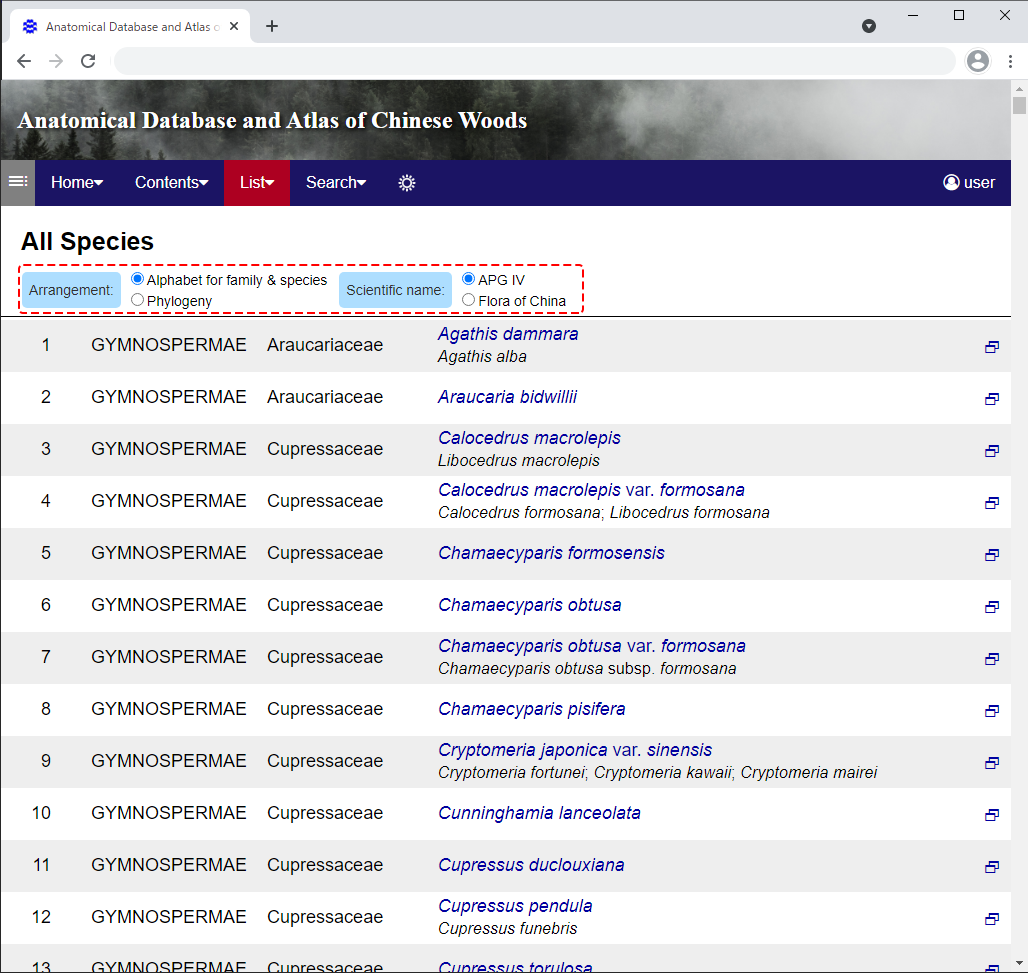
Figure 15. A part of the list
When the users click on one of the three sub-menus, a list of all species, softwood species or hardwood species appears. Individual species names will be displayed in the following order: gymnosperm or angiosperm, family name, and the scientific name of a species. Figure 15 is an example of the list when choosing “Alphabet” from “Arrangement” and “APGⅣ” from “Scientific name". When clicking scientific name of some species, the file including the microscopic features, a distribution map, a macro photo (or stereomicroscopic image), and nine optical microscope images of some species, is displayed on the screen (Fig. 16a). As for the description of the microscopic features in hardwood, a heading including the scientific name, its synonyms, Chinese name and pinyin, followed by “General”, “Growth rings”, “Vessels”, “Tracheids and fibres”, “Axial parenchyma”, “Rays”, “Intercellular canals” (or “Tubes/tubules” or “Cambial variants”), “Uses”, “IAWA codes” and “Source of wood specimens” appear on the screen in order. Several functional keys can be viewed on the menu bar in Fig. 16a (or red square in Fig. 16b). Clicking on “Hide descriptions” in the square, the screen switches to nine pairs of optical microscope images. At the same time, “Hide descriptions” on the menu bar switches to “Show descriptions”. Clicking on the “<” or “>” signs in the menu bar, the screen switches to the previous or next pages. When clicking on the “Return to list” in the menu bar, the screen switches to a list of all species, softwood species or hardwood species.
If necessary, two or more microscopic images or descriptions will be displayed on the screen at the same time by cricking on an icon, “opens in new window button 2”. Therefore, microscopic images or descriptions of different species can be compared easily and quickly for finding some differences of their microscopic features.
In general, users can find descriptions, distribution maps or microscope images quickly by scrolling up and down on the screen. If users want to look at enlarged microscopic images, they have to move a cursor over the individual image and click on it, then the image will be enlarged. Further, the image will be enlarged more by turning the mouse wheel. Whenever the image is enlarged, further additional image manipulation marks (toolbar) appear below the image. The explanations of the function are omitted, but users can click on the individual marks to see how they work.
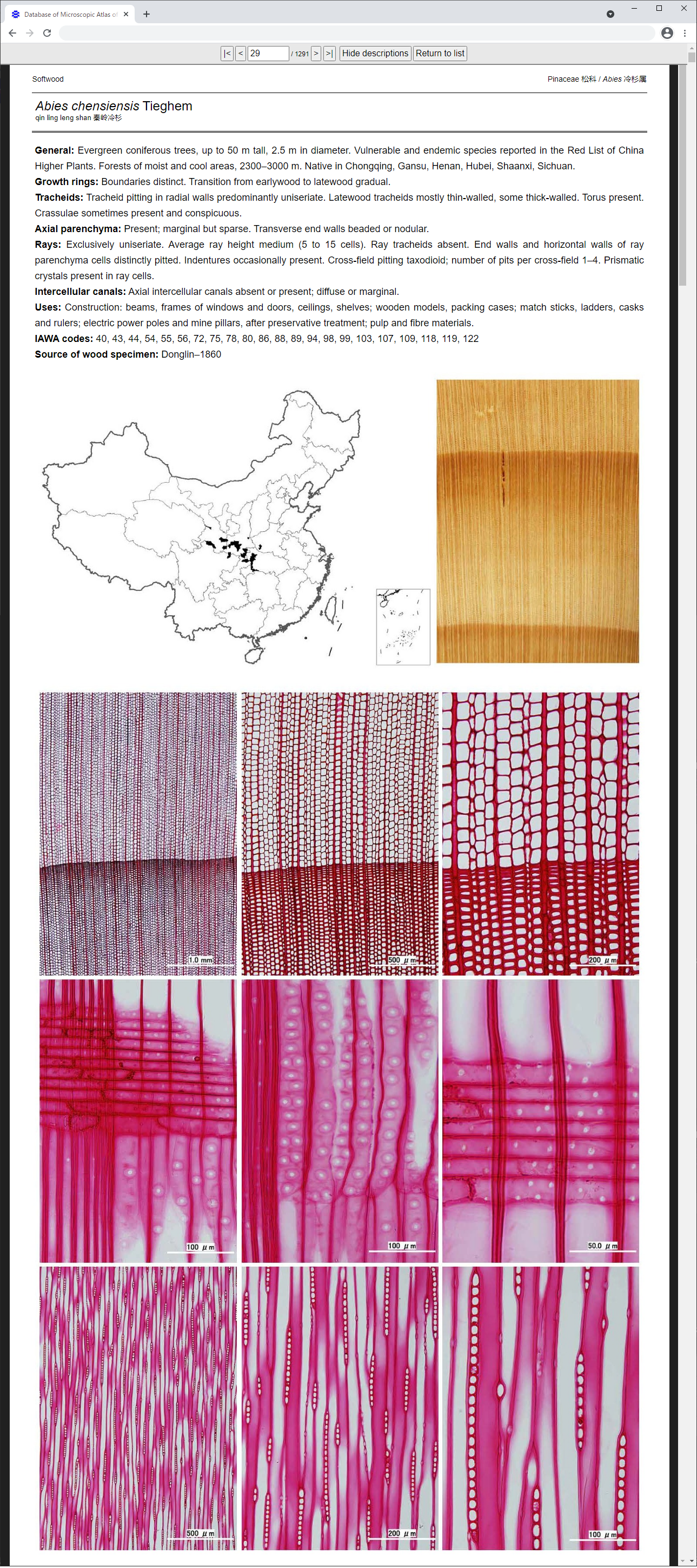
Figure 16a. A screen showing the plate of Abies chensiensis.

Figure 16b. A menu bar.
Moving the cursor to “Search” in the homepage shows the following sub-menus.
Any sub-menu can be opened by clicking on it.
Clicking on “Names” will display the screen of “search by names” (Fig. 17).
Any one of the following three names can be used for searching wood species.
Prior to searching by any one of three sub-menus, the user needs to choose “Flora of China” or “APG” by clicking the small circle in front of either one of the classifications (red dotted ellipse in Fig. 17).
As shown in Table 4 in Chapter I, the old family names have been replaced by new family names in the updated family-level classification. Therefore, if you select "APG", you will be able to search for trees belonging to the new family name, but not those belonging to the old family name, and the message "no record found" will appear. Conversely, selecting "Flora of China" will produce the opposite result: trees belonging to the new family name will not be searched and "no record found" will be displayed.

Figure 17. Screen of “Search by names”.
Family name
Move a cursor to a long and blank rectangle to the right of the “family name” and click on it. Then, all family names listed in this database will appear in alphabetical order (Fig. 18). Moving a cursor on the family name that users want to search, and click on it, the family name that you have chosen will appear in the rectangle. Click on the “search” button, then a list of all genera and species belonging to the selected family will be displayed on the screen (Fig. 19a, showing an example of Betulaceae). Microscopic features of any species in the list will be displayed on the screen by clicking on the scientific name or on the icon (open in new window button 2).
If the users wish to continue to view the information of another species in the list, they can move the cursor to the “back to search page” button (red dotted square in Fig. 19b) under the menu bar and click on it to return to the original list screen. Then, select other species again after clicking on "Reset" button.
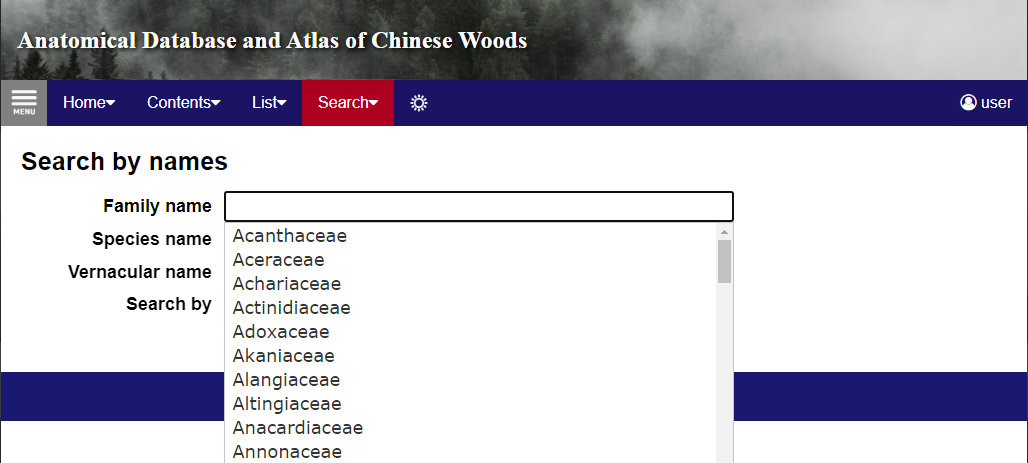
Figure 18. Display of family names.
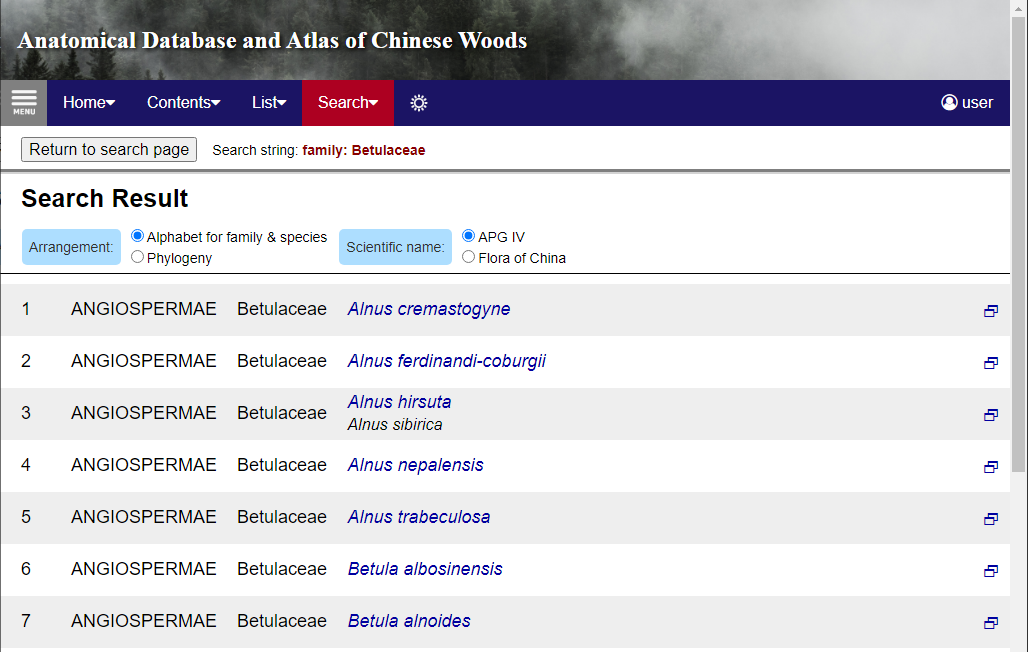
Figure 19a. An example of Betulaceae.

Figure 19b. “back to search page” button.
Species name
Move a cursor to a long and blank rectangle to the right of “species name” and click on it. Then, all species (scientific) names including synonym listed in this database will appear in alphabetical order. Move a cursor on the species (scientific) name that users want by scrolling and click on it, the candidate species name will appear in the rectangle. Click on the “search” button, then the microscopic features and images of the candidate species will be displayed on the screen. To magnify an individual microscope image, move the cursor over the individual image, clicks, and turns the mouse wheel. Whenever the image is enlarged, further additional image processing marks (toolbar) are displayed below the image (Fig. 20). The function of the image processing marks are not explained here, but you can click on the individual marks to see how they work.

Figure 20. Showing image processing toolbar.
If users want to look at anatomical descriptions, distribution maps or macro photos after viewing the microscope images, move the cursor over the “show descriptions” on the menu bar and click to switch screens.
If the users want to search other species, move the cursor over the “Return to search page” on the menu bar (square in Fig. 16a & 16b) and click it, the screen will return to search page. Then, click on the “reset” button to reset the species name left in the blank square of species field and start the search of other species again.
Notes: Instead of following the above procedure, enter some genus name in the blank rectangle to the right of the “Species name” and click the “Search” button. A list of all species belonging to that genus will be displayed. The icon, “open in new window button 2” function allows us to quickly compare microscopic features and images of all species in the genus.
Vernacular name
Move a cursor to the blank rectangle to the right of “vernacular name” and click on it. Then, all vernacular name in this database will appear in alphabetical order of pinyin with Chinese characters. Moving a cursor to a pinyin with its Chinese character that users want by scrolling and click on it. The candidate pinyin with its Chinese character will appear in the rectangle. Click the “search” button, then, the microscopic features of the candidate species will be displayed on the screen.
For the rest of the search, please refer to the search method by “species name”.
These two sub-menus are constructed for identifying wood species by narrowing down the candidate species from all species listed in this database. Prior to searching IAWA codes, users need to select a number (from 0 to 5) of mismatches allowed by clicking “mismatches allowed” button (ellipse in Fig. 21). The probability of a successful search will be increased by selecting a high confidence microscopic features (or IAWA codes).
By clicking on “IAWA softwood codes” (or “IAWA hardwood codes”), “the IAWA softwood (or hardwood) list will be displayed on the screen (Fig. 21). Microscopic features (or IAWA codes) obtained after examination of microscopic slides prepared from some unknown wood specimen can be determined by selecting “+” or “−” (“present” or “absent”) that appears successively by clicking the empty square in front of each IAWA code. After detecting other reliable microscopic features (or IAWA codes) as much as possible and clicking the “search” button on the top of the screen, a list of candidate species will be displayed on the screen. Microscopic features of some selected species can then be viewed by clicking on their scientific name.
Notes: When the search of microscopic features in an unknown sample is unsuccessful, “no record found” appears on the screen. In such a case, it is recommended not to select too many codes and to avoid codes corresponding to ambiguous features. Instead, only reliable microscopic features (or IAWA codes) should be used in the search to narrow down the candidate species and continue the search for candidate species using other reliable IAWA codes. Once the candidate species have been narrowed down, a detailed comparison of the microscopic slides of unknown specimen and the reference microscopic slides of the candidate species should be made using optical microscopy. Therefore, it is always recommended that a reference microscopic slide or specimen be used to validate the results of user’s database search.
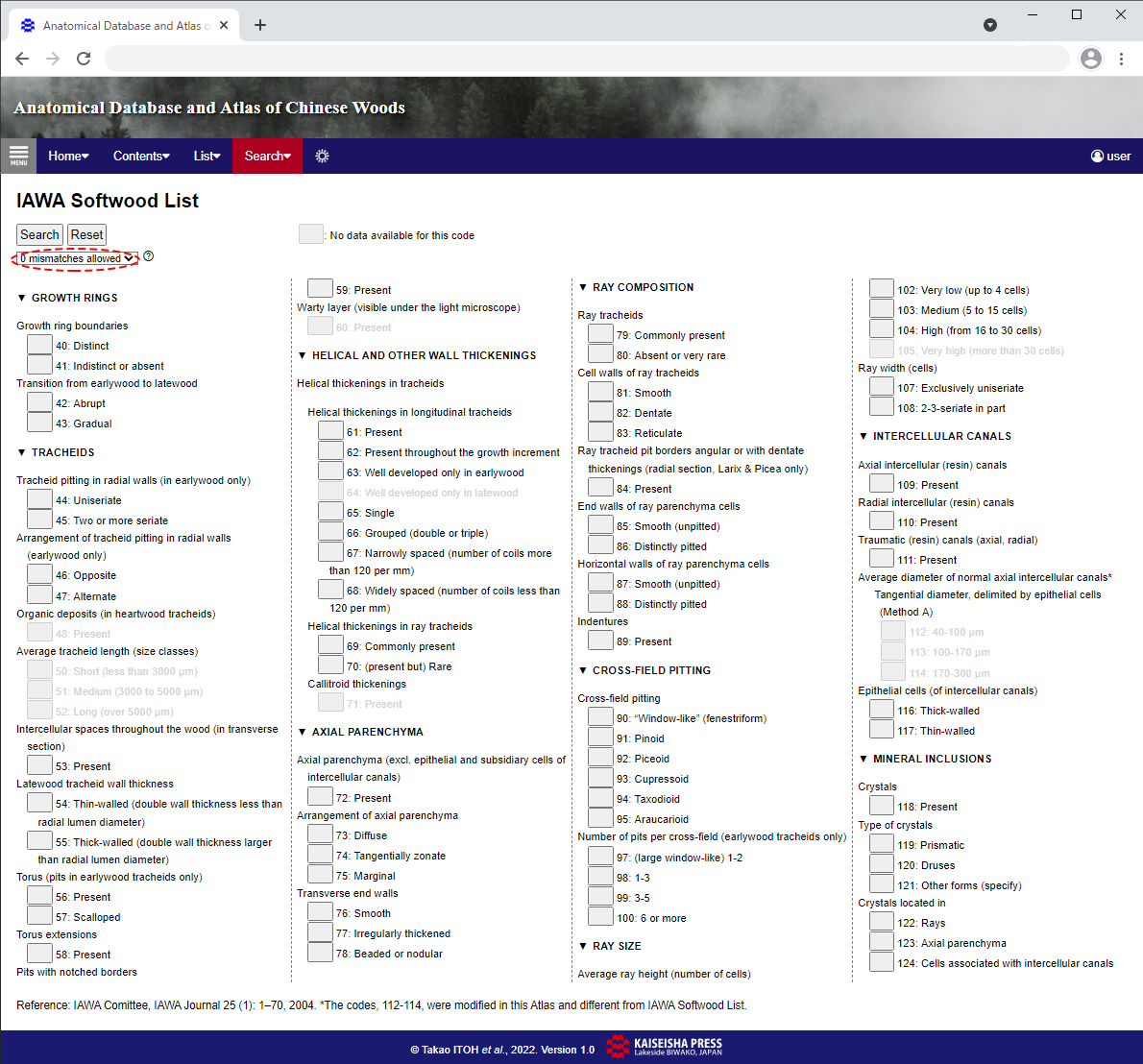
Figure 21. Showing 'IAWA List of softwood codes'.
The search options in this database of Chinese Woods, offers basically the same options for wood identification as the Inside Wood Database (1). Useful advices on which search strategies to adopt for identification various sorts of unknowns and which pitfalls to avoid, are given in Wheeler et al. (2).
1) Wheeler, E.A. 2011. Inside Wood – a web resource for wood anatomy. IAWA J. 32: 199-211.
2) Wheeler, E.A., Gasson, P.E. and Baas, P. 2020. Using the InsideWood web site: Potentials and pitfalls. IAWA J. 41: 412-462.